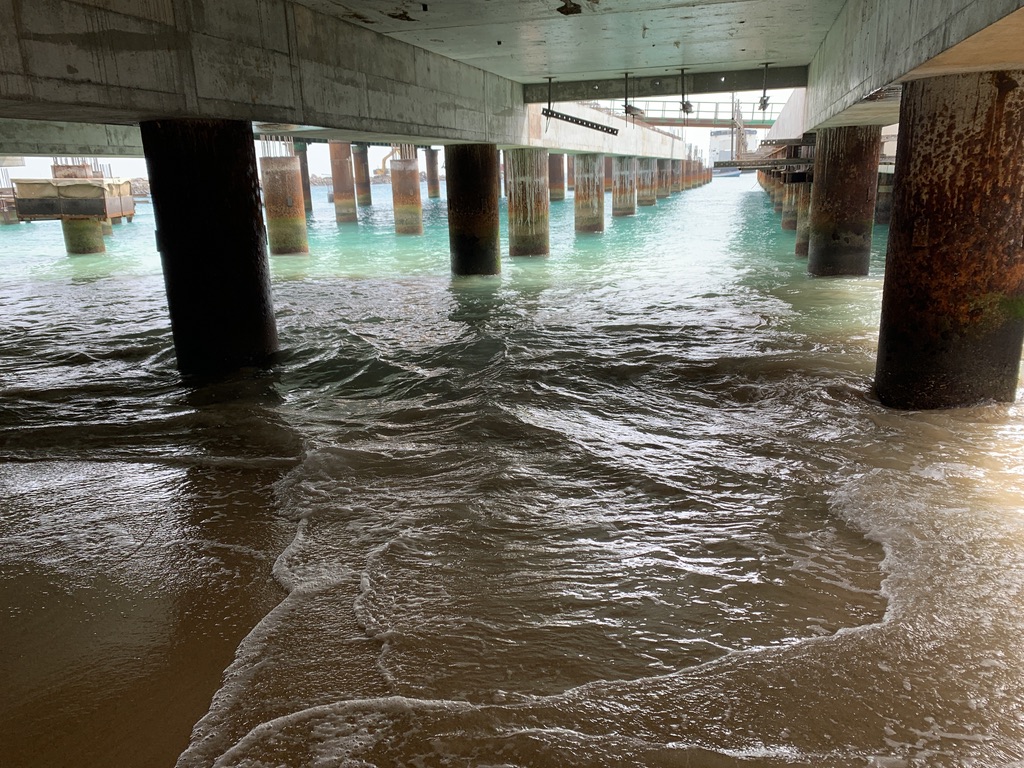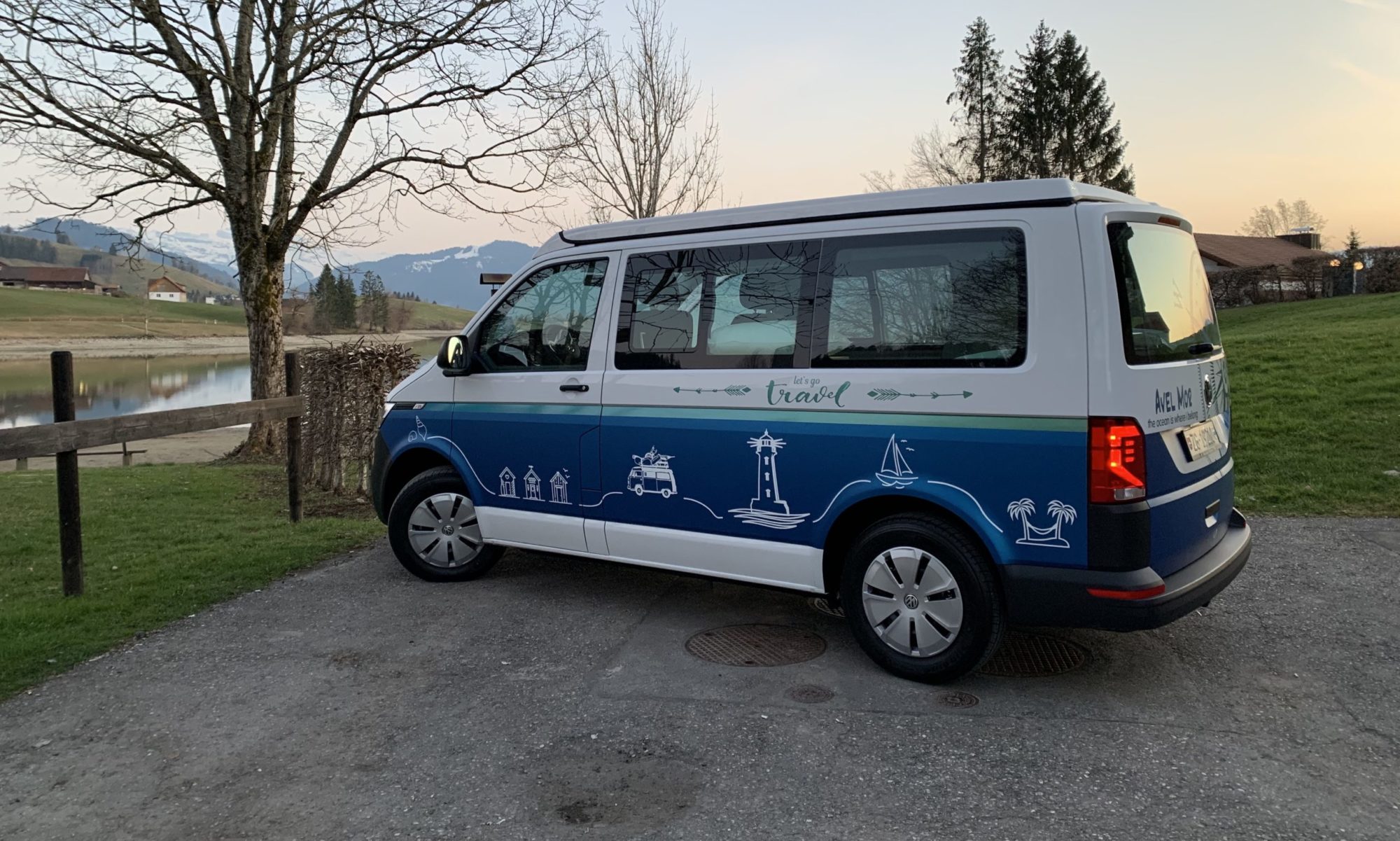I’ve got a few hours to spend in Mindelo before I’ve to go to the airport and fly to Santiago, the biggest of the Cap Verde islands. I meet Marina again and we stroll the streets of Mindelo again and also pay a visit to the fish market. Last time, I was completely stressed out with my follower. So this time I have time to look at the wonderful fishes. It’s an African market, local, fresh, lively. Women selling the fish, men descaling the fish with a special tool – an old tin with drilled holes in it. It serves perfectly!
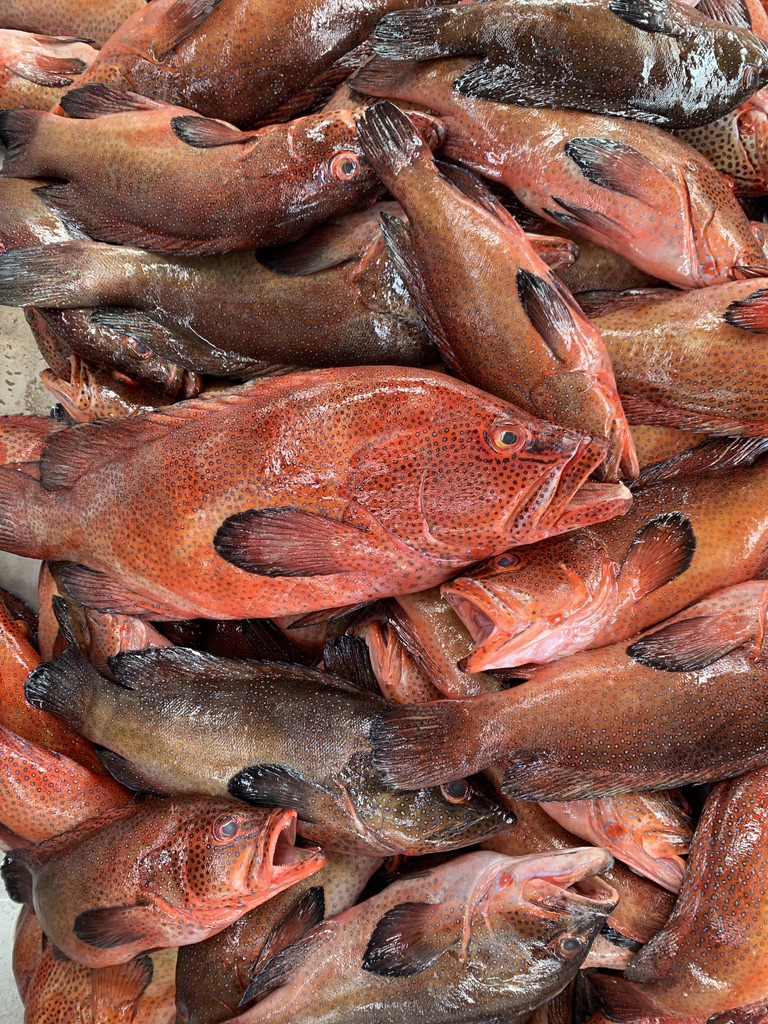
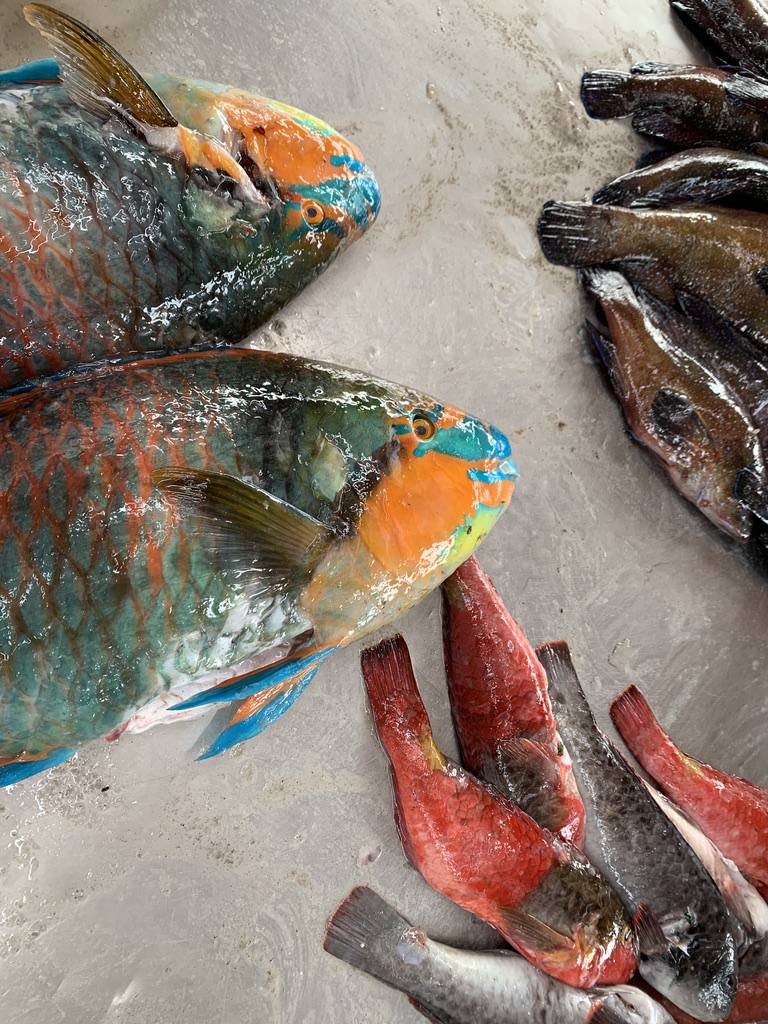
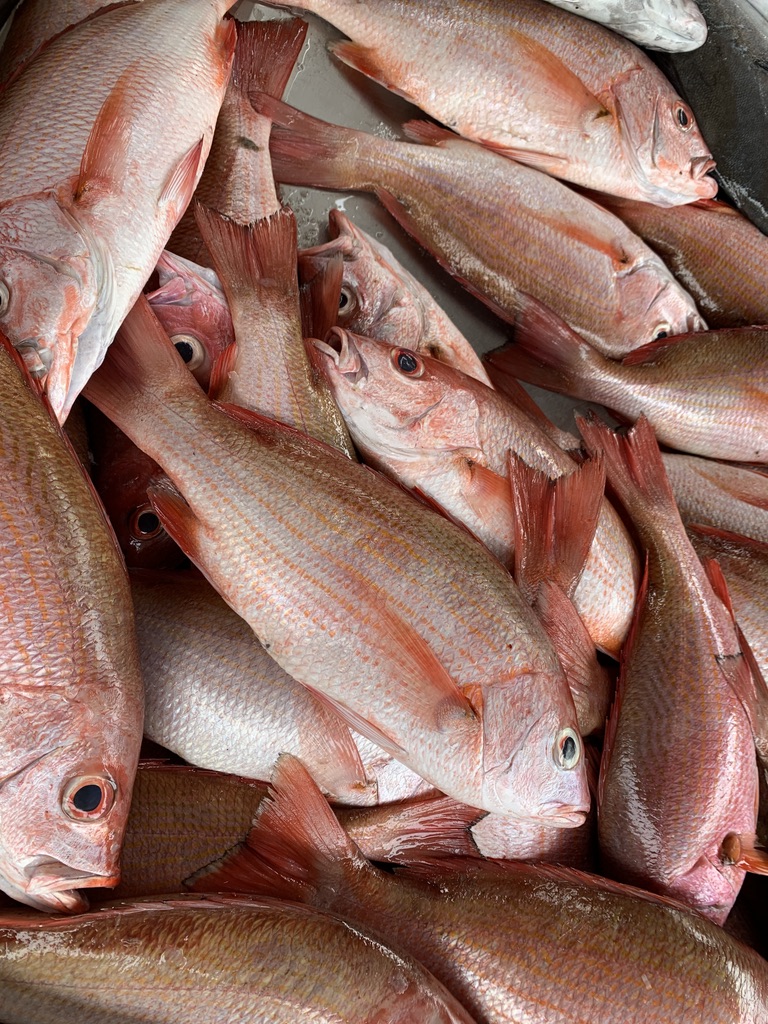

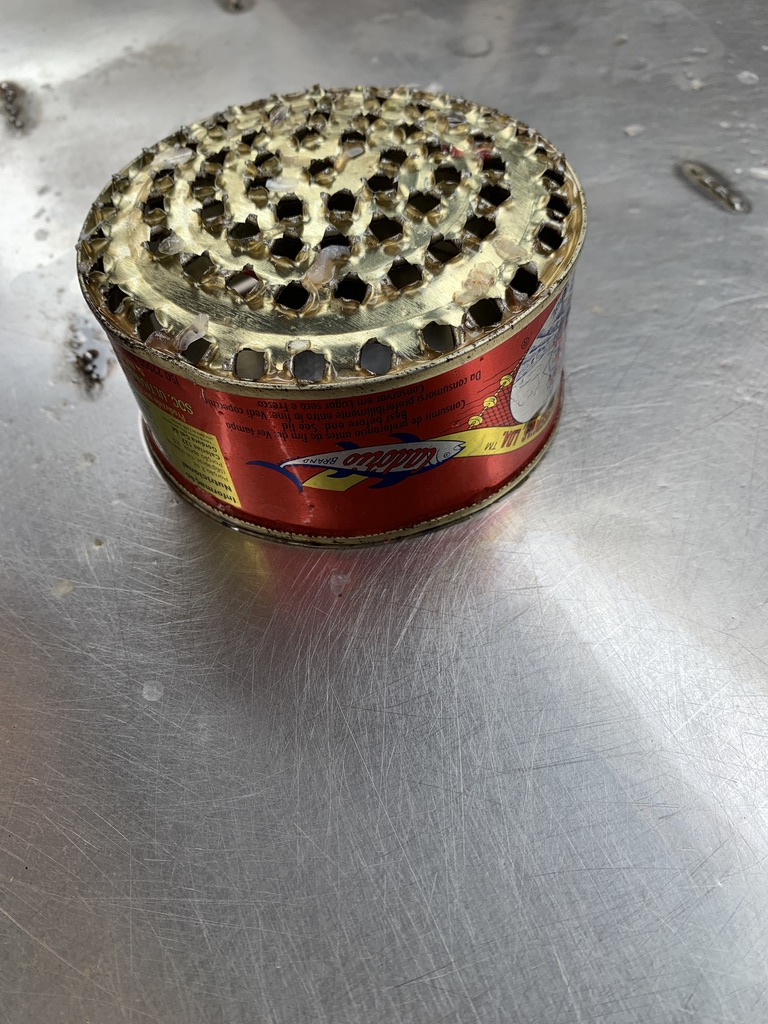
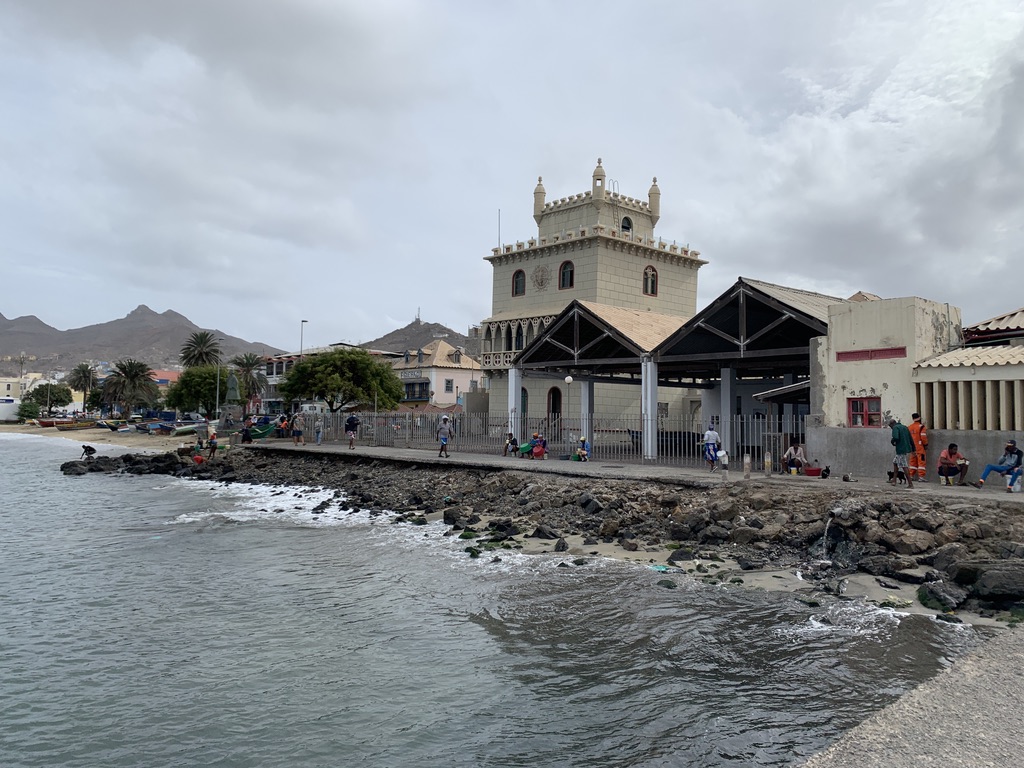
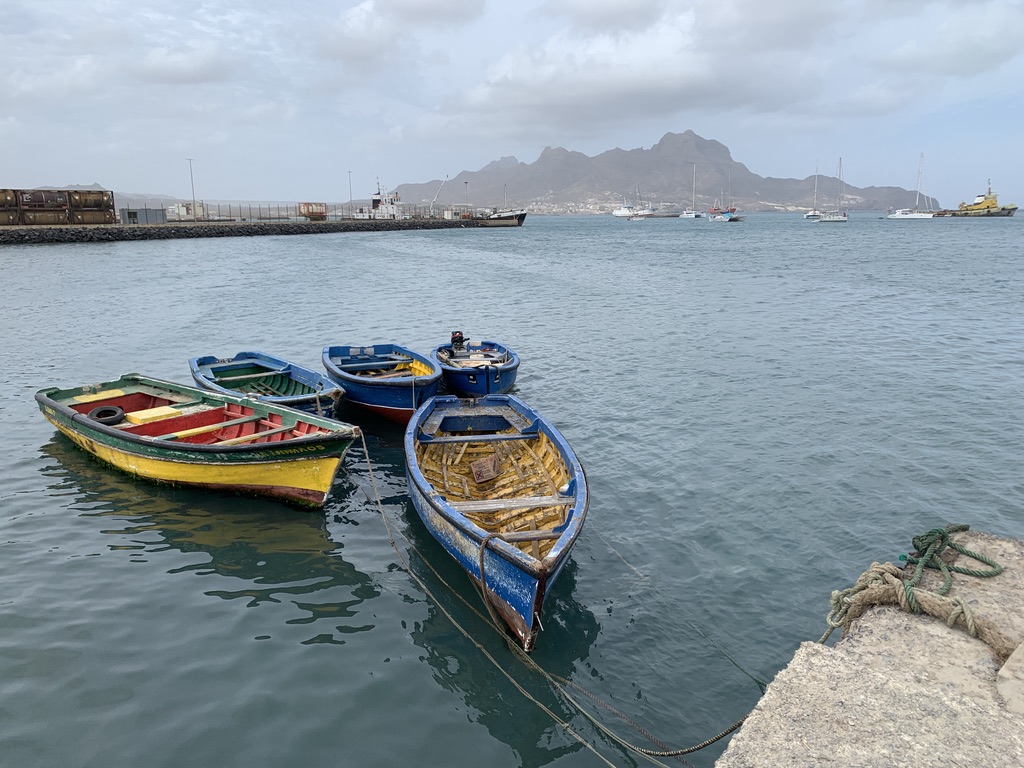
Marina and I go and have a look at the exposition about Césaria Evora in the former presidential palace. It’s a collection of vinyl discs, diary notes, pictures and clothes that have belonged to the grande dame of Morna.
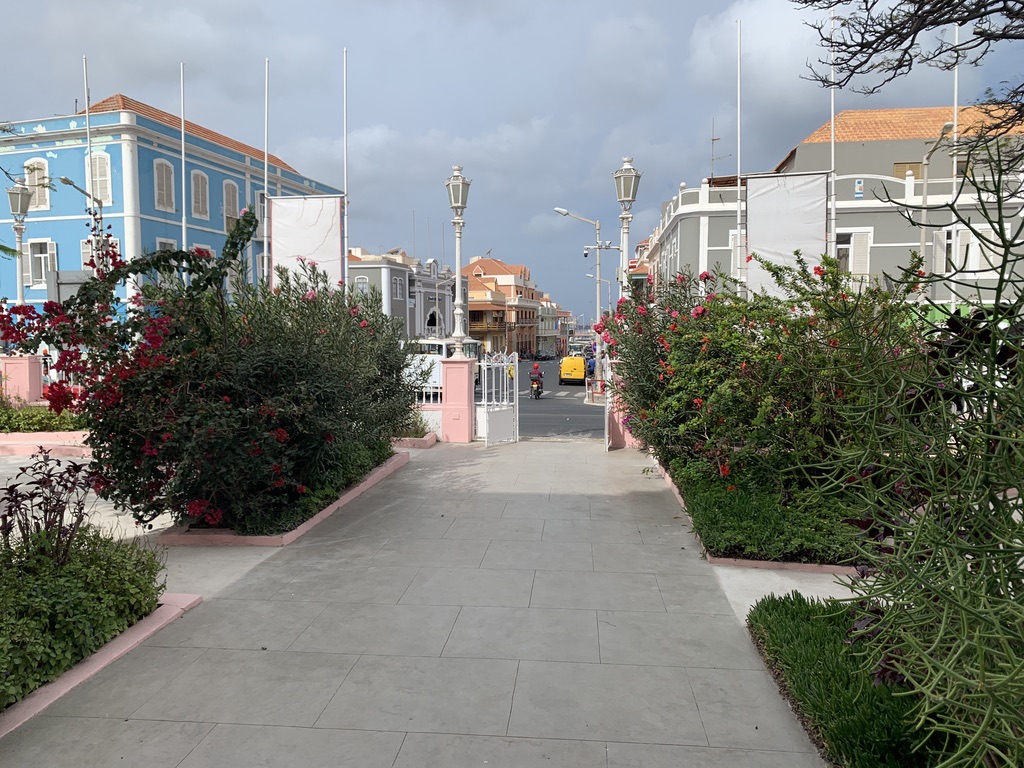
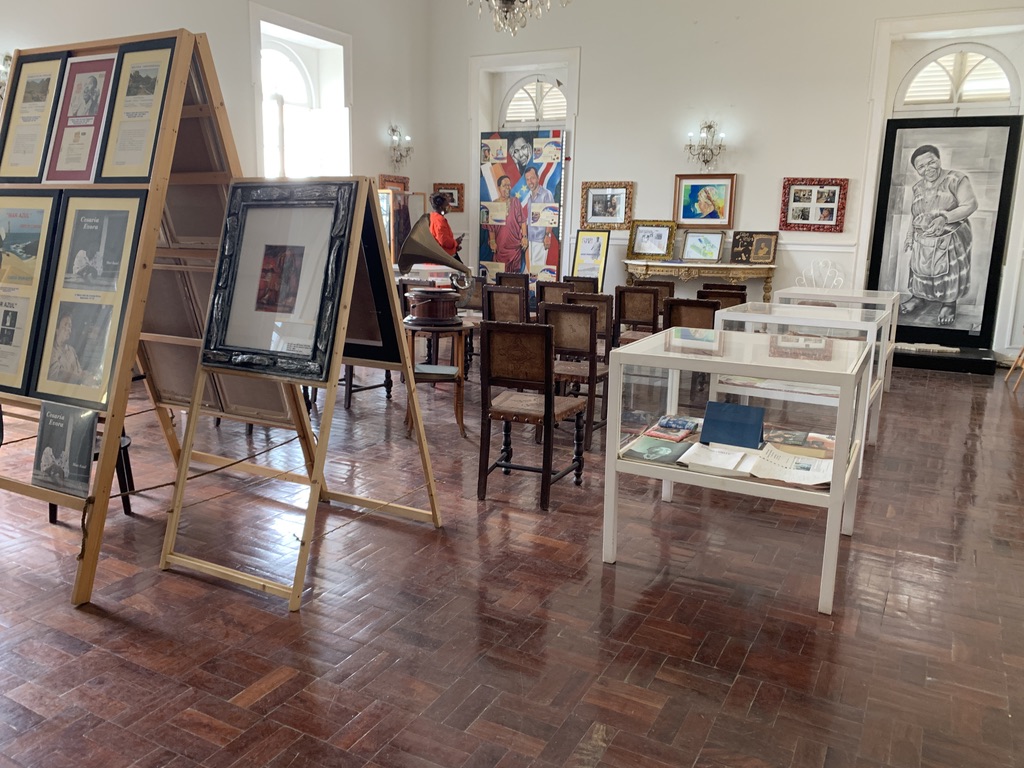
We also go again to the beach in Mindelo. It’s said to be artificial in its whiteness. It looks beautiful, exotic if you just look out onto the sea, but once you see the surroundings, mostly ugly building sites, it does not look so inviting anymore. The wind has freshened and we do not stay long there. I also have to get back to the hotel to get my luggage and go to the airport.
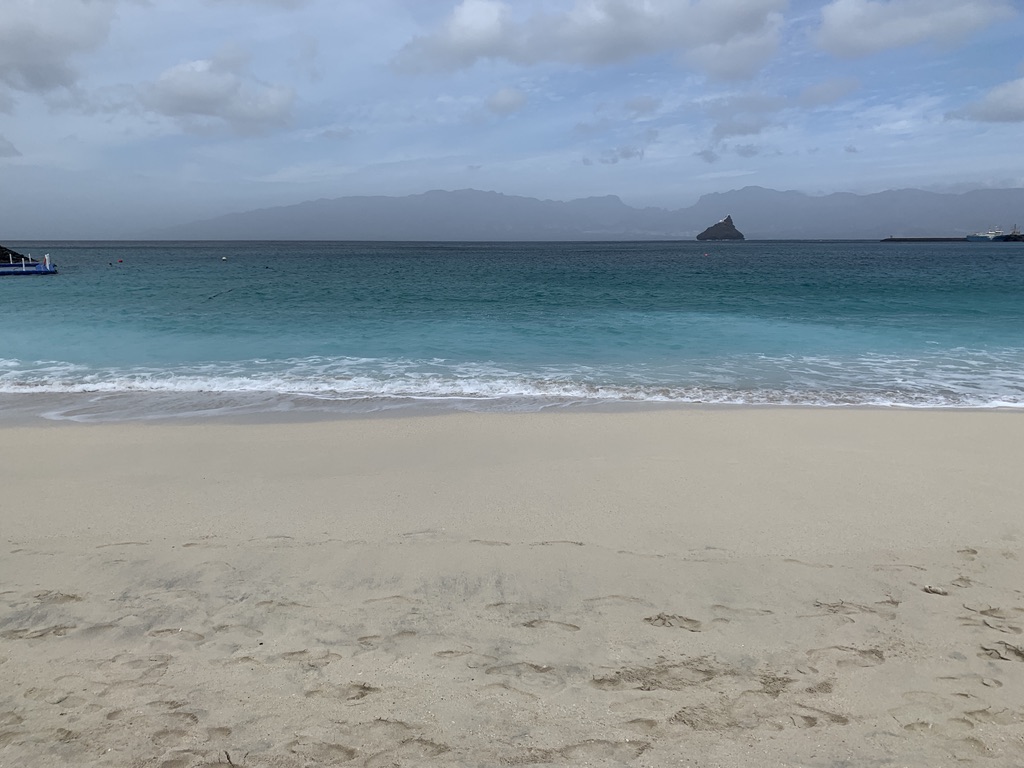

I share the taxi with the couple from Nantes that we met yesterday, Lyn and Christophe, both teachers as well. But when we get to the airport the departure time is shown at 17h35 instead of 15h35. Christophe first thinks this has to be another flight. But I don’t think so – there will not be more than one flight from São Vicente to Santiago a day. And I’m right. The flight is delayed. Someone murmurs because it was not full in Praia and they were waiting for the passengers from Sal to join.
Lyn is quite upset. She seem to be an active person, someone, who cannot sit still for a while. So, she quickly decides to take a taxi and go to the nearby San Pedro beach. They only have little luggage – I always envie people who are able to travel with only light luggage. My bag is rather heavy and I don’t want to carry it around for long, so I stay in the airport using the time to write my blog, as the internet connection is not bad.
After a while check-in opens and I get rid of my heavy bag. After two hours Lyn and Christophe come back – in high spirits. They had Sangria at the beach and met – Marina! It’s funny, after one week on the Cap Verde islands I’m finally sitting with six people in the small airplane to Praia that I’ve met before – the couple from Nantes, a young couple from Belgium we met on the hike in Fontainhas, and Paul and Rémy (the Oléron boys), who are almost last to arrive. But Rémy is probably so used to all this that he knows how things work out. He’s also been informed about the delay.
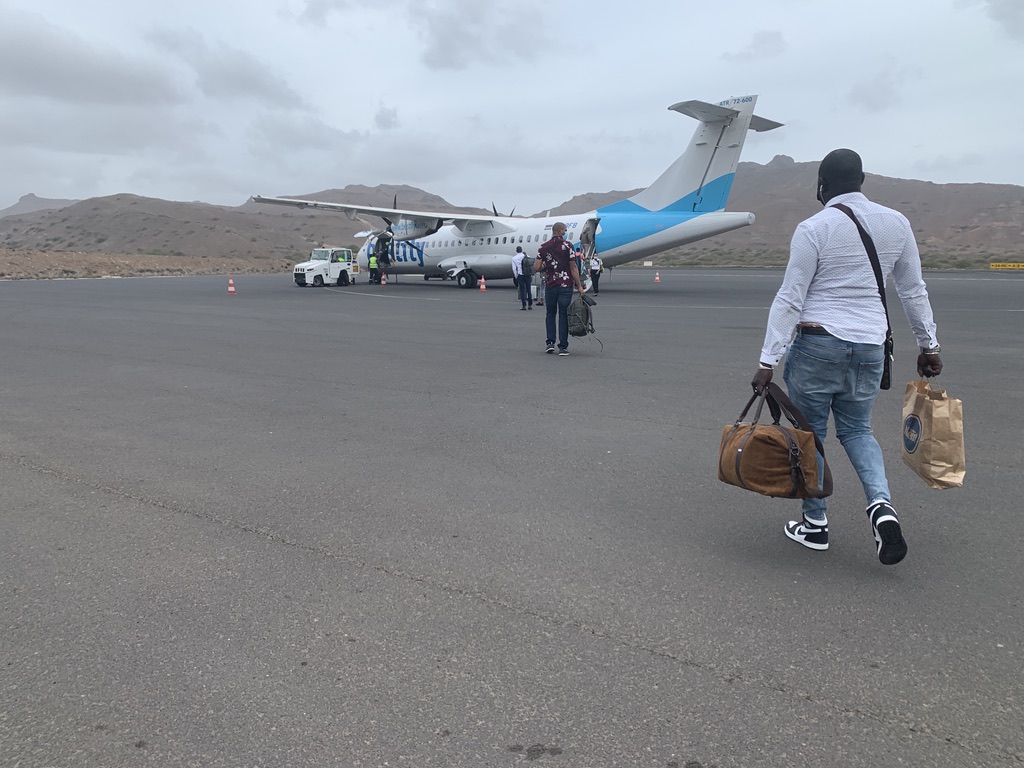
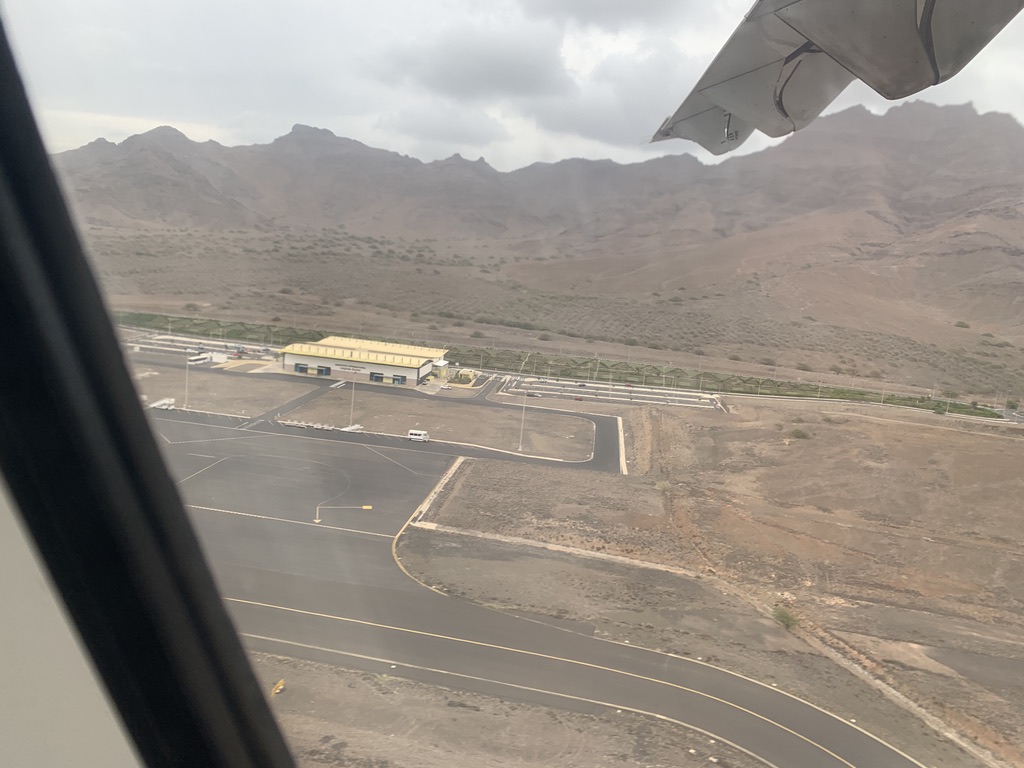
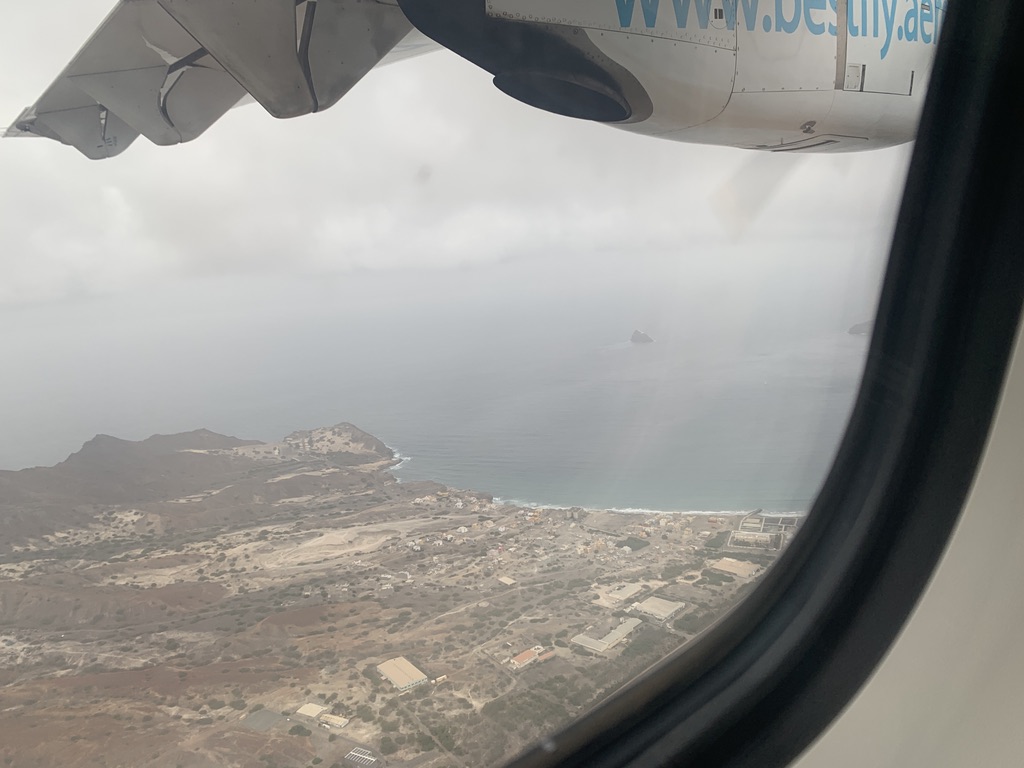
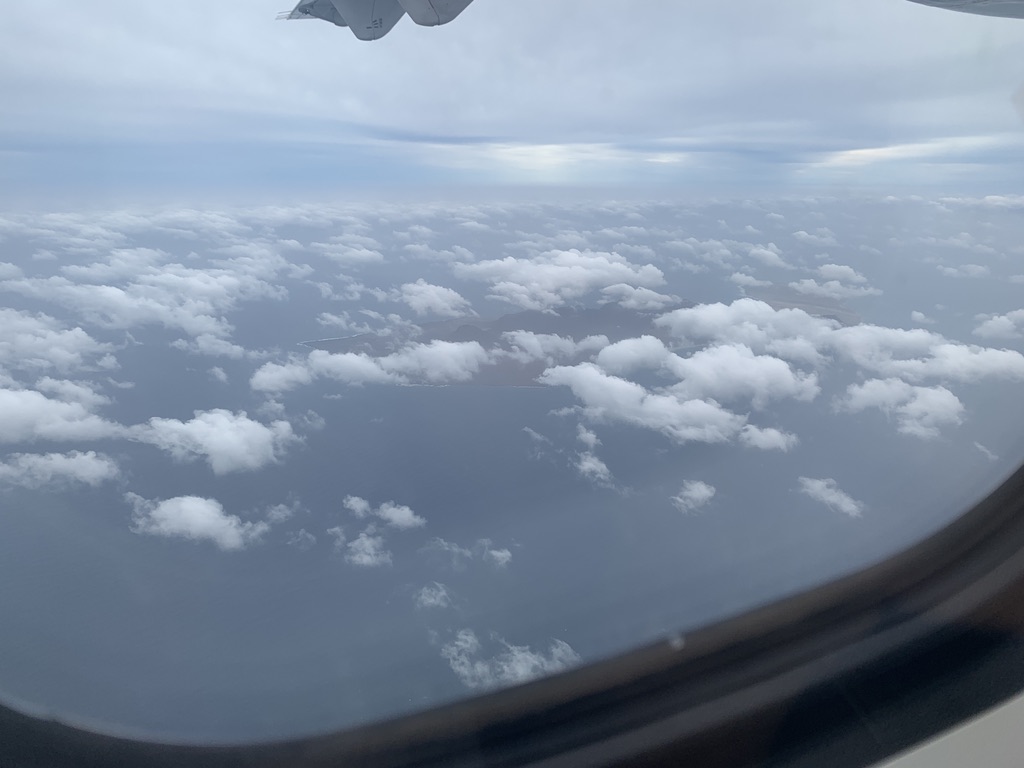
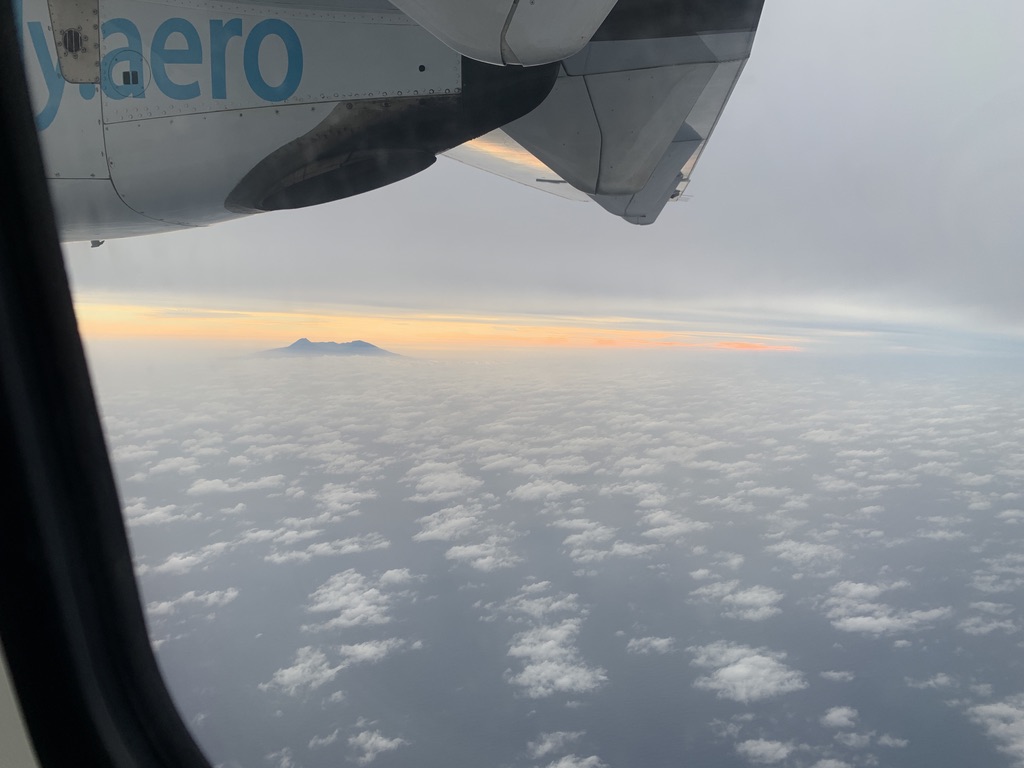
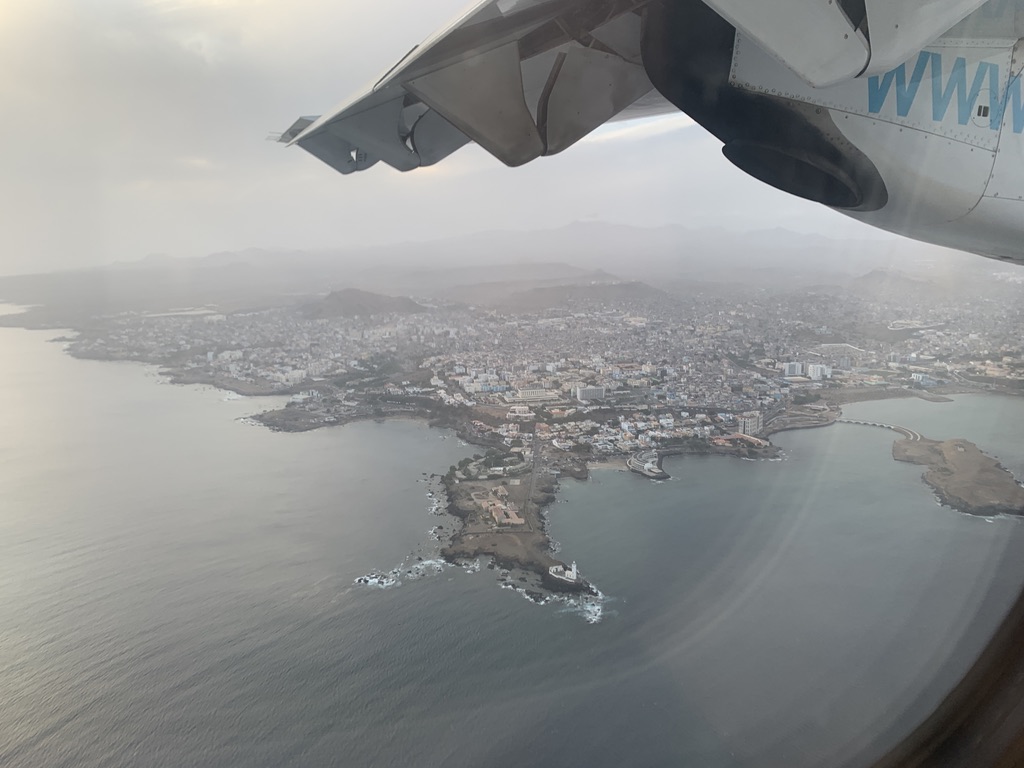
The flight takes 50 minutes and we arrive safely in Praia. Again, things are well organised and I’m taken to my hotel, after I’ve said goodbye to Paul, Lyn and Christophe. Rémy, I hope, will still be in Tarrafal when I get there next week, waiting for the container with surf material or instructing …
The check in at the hotel is slow and I once again get such an in-court room, meaning you’ve only got a window to a dark courtyard. I’m hungry. I’d like to have something else than burgers. At the hotel the salad niçoise sounds inviting, is on the menu – but not available. This is something that has happened many times to me by now – things are on the menu, once you chose them, they’re not available. A constant disappointment. I decide to try my luck elsewhere. The next restaurant is posh and completely booked out, the Bistro next door only serves fish and meat dishes. Then I find Kaza Katchupa. I chat with a single customer. He’s a Portuguese businessman and helps me understand the menu. Once he has left, Helena sits next to me. She is Italian, also one of this winter refugees here, from Ravenna. Back home a tourist guide, here a … I don’t know. But what I notice is her biting her fingernails. I’m having my spaghetti kreoli (with chorizo, local cheese and herbs) and it’s getting on my nerves. But what makes me think is that for years on end I also bit my nails – and I know see what it must have been like for my company to sit next to me seeing me bite my nails. I’m sorry, I apologise to all of you – it’s horrible. Luckily, I was able to stop this habit years ago and only rarely bite my nails now.
Even though my night is extremely short – I’ve to get up at 4h45, will be picked up by the taxi at 5h30, I hardly sleep in the again – coffin like – room. I spend my night thinking about strange things and also have strange dreams. I’m glad when the alarm goes off at last – and I’m not tired at all. My things are quickly packed up and the taxi is already waiting when I come down. We pick up two other people who also want to fly to Maio today and the taxi brings us to the airport. Check-in is fast and smooth. Then we have to wait, with an empty stomach seemingly endlessly, until we can finally board the plane.
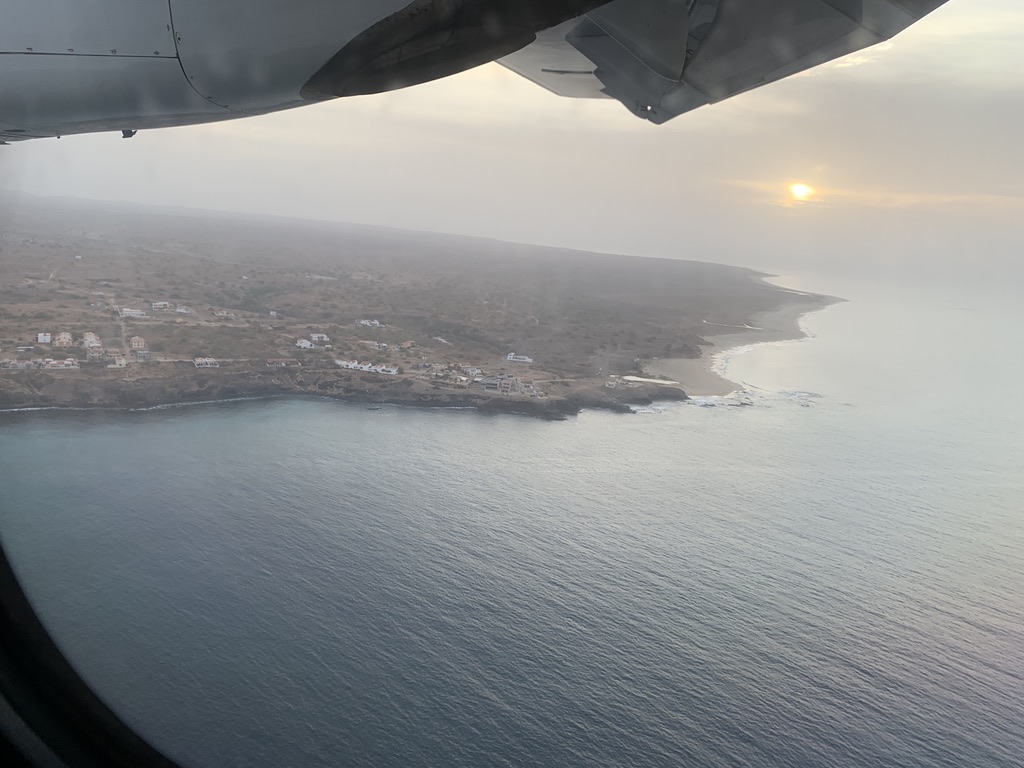
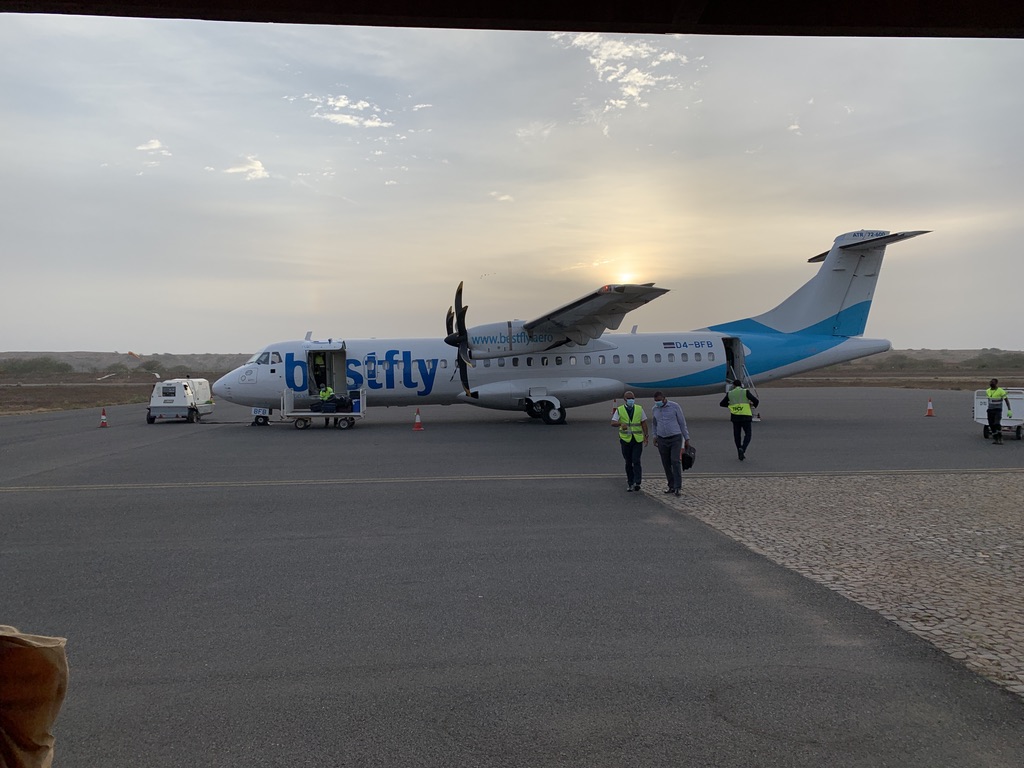

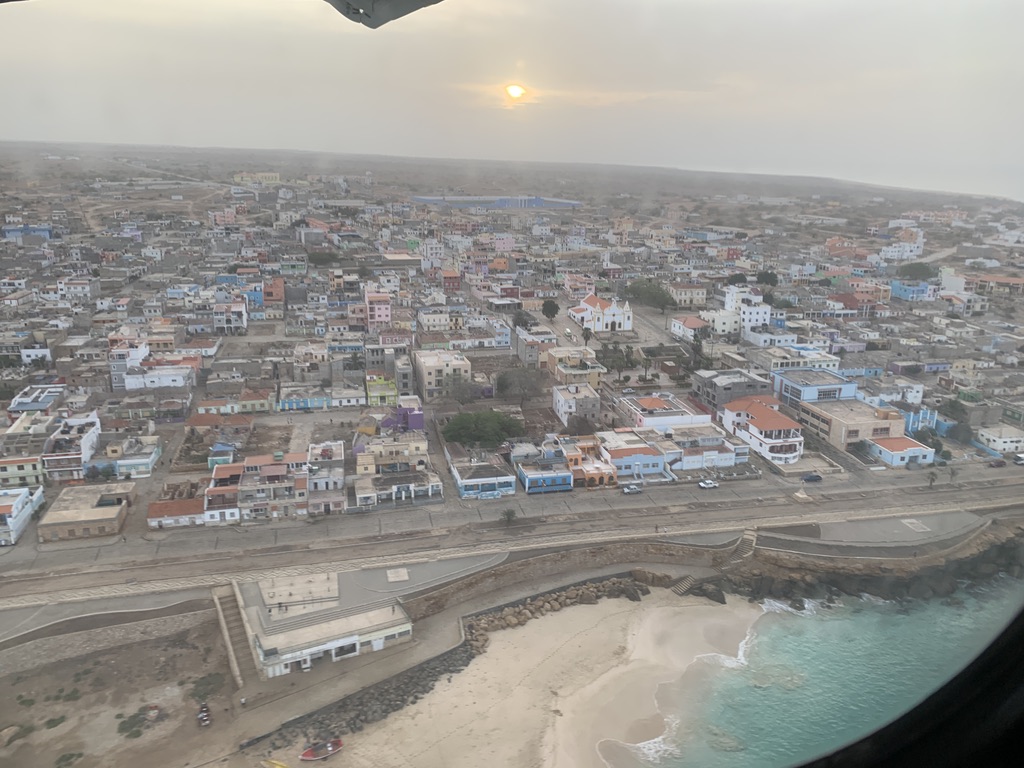
It’s just a 10 minutes’ hop over to Maio – yet, the travel agency suggested that it would be better to go by plane as ferry connections are even less reliable. Well, we’ll see. It’s only 7h20 when we land on Maio. The descent was spectacular, all along the shoreline of Vila do Maio, the main place on Maio. I’ve even taken a pic of my hotel without knowing it.
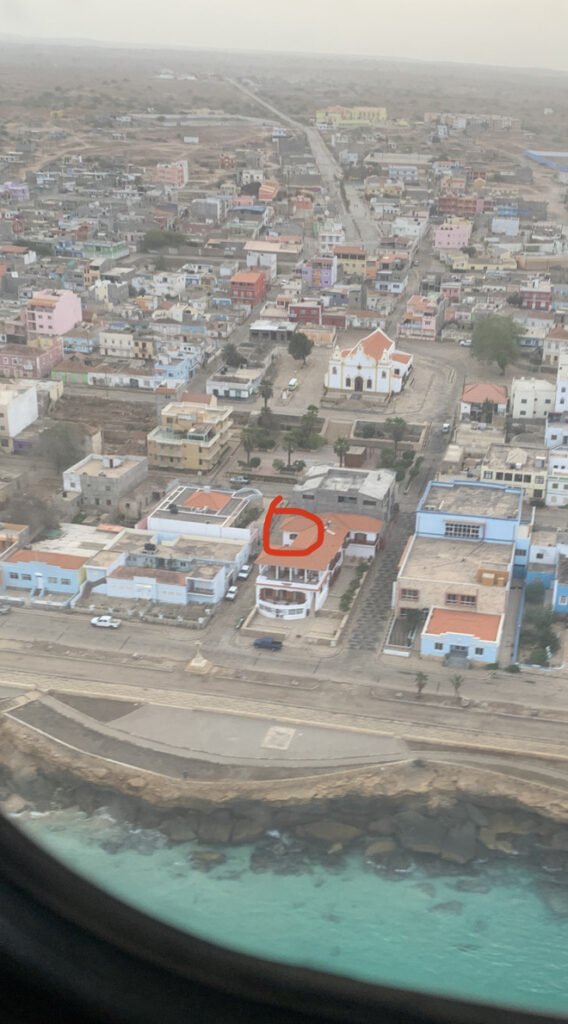
I’m greeted by the transfer and taken to my hotel, where I really long for breakfast. And it’s a wonderful breakfast, with honey and pancakes. And my room in this old refurbished colonial house is very – very – nice, stylish, too. The best I’ve had so far.

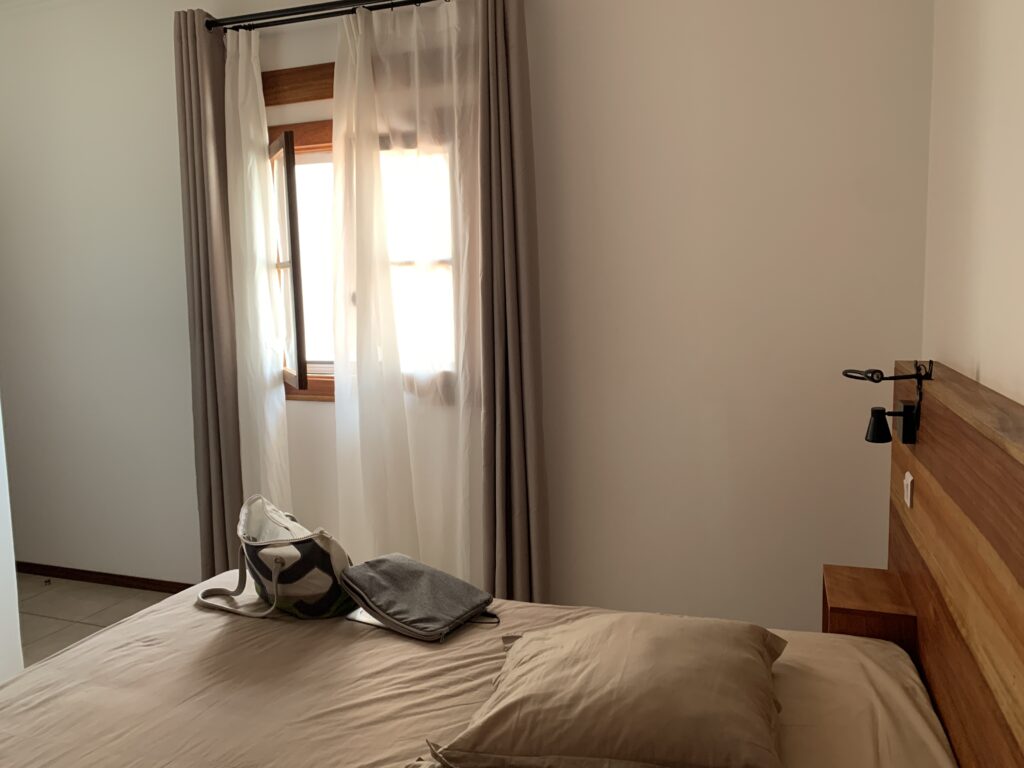
Later I go for a stroll in the village (town?). I’m impressed by the cathedral already built in 1847. I walk about the almost empty streets, chicks passing my way, dogs lying in the shade, smoke from small fire stoves spreading this typical smell of Western Africa – yes, this is it, this is Africa! I instantly feel at home and ponder that Mindelo and Santo Antão would probably more have had the spell of Brazil while this now was Africa.
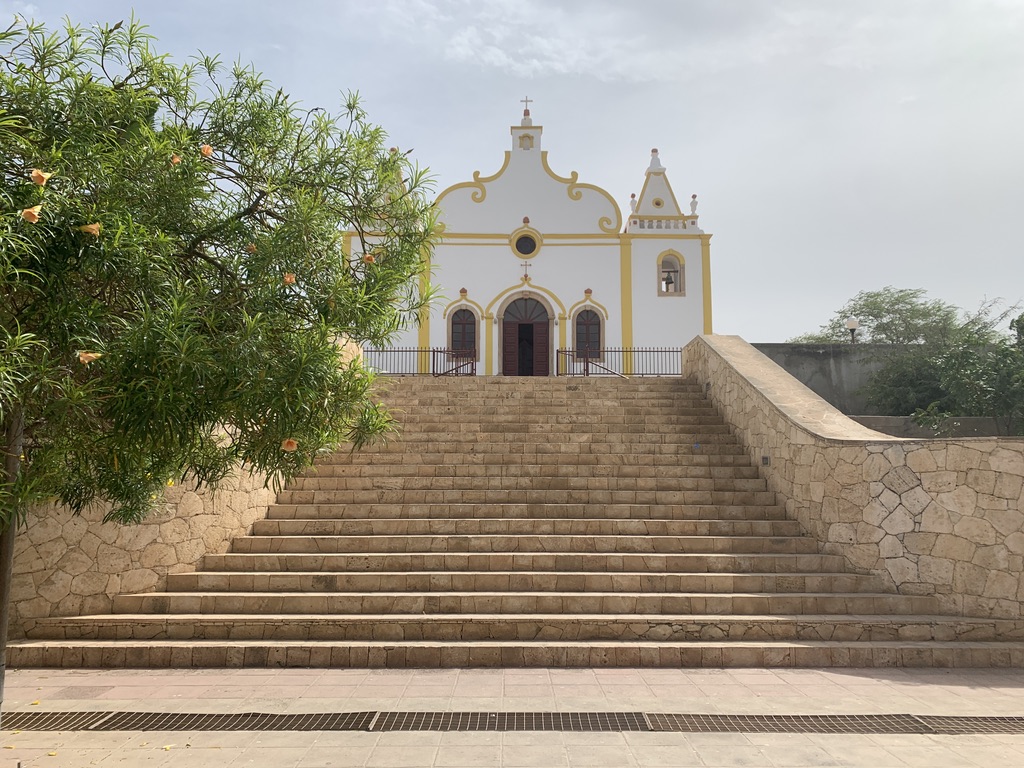
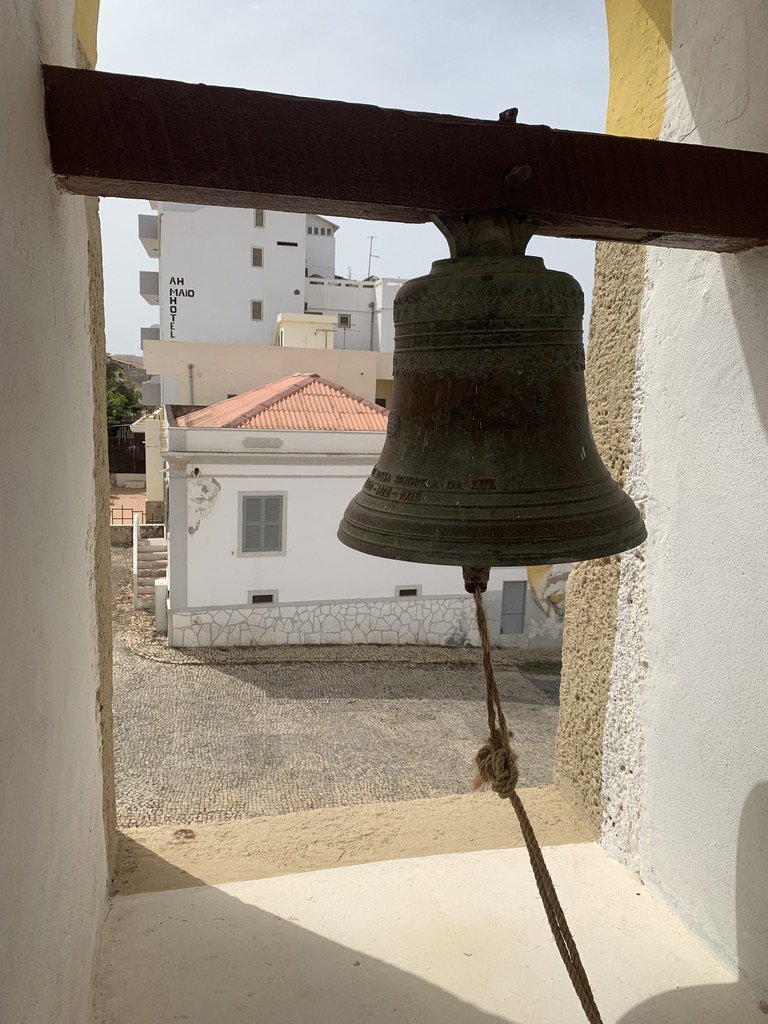
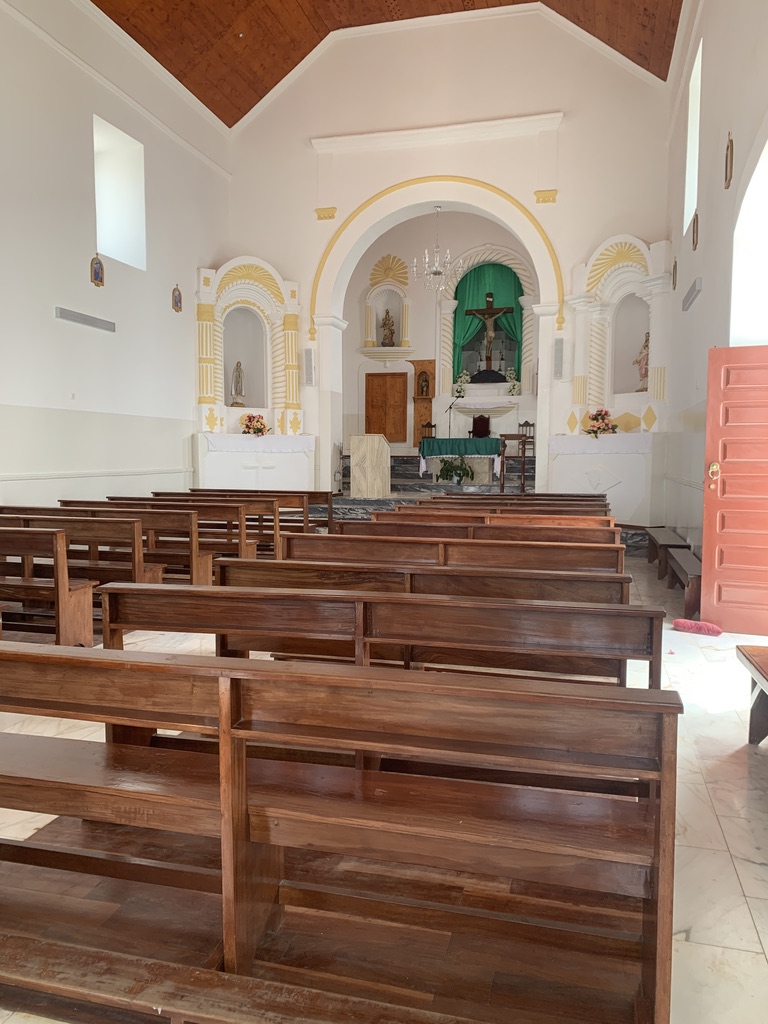
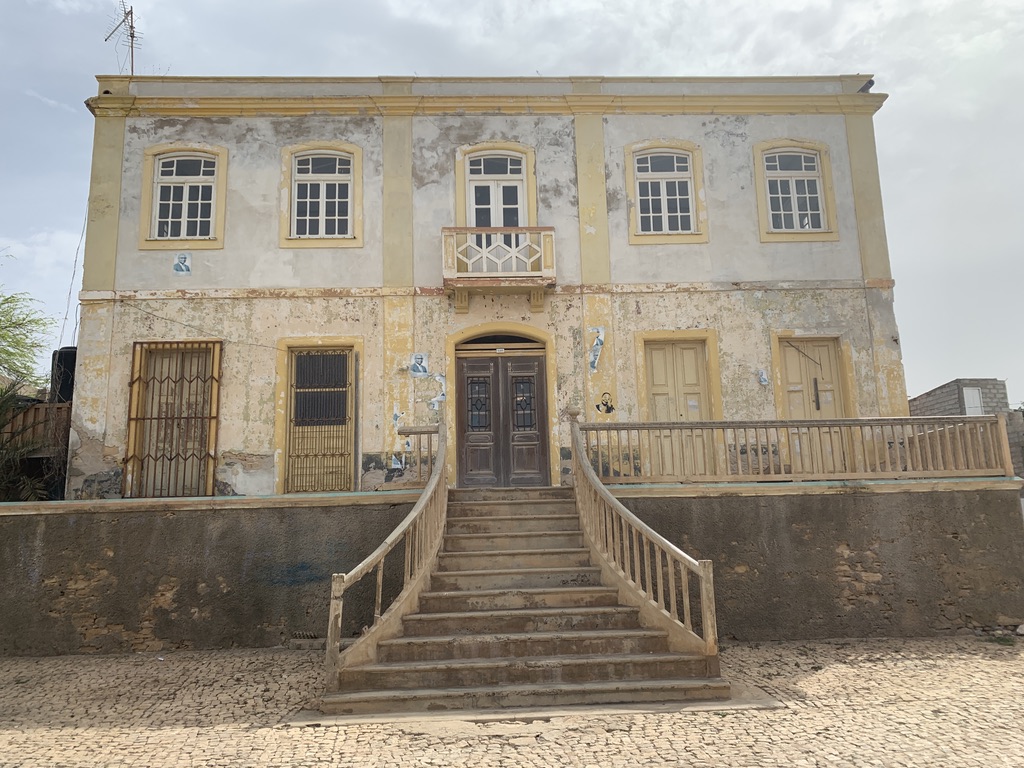


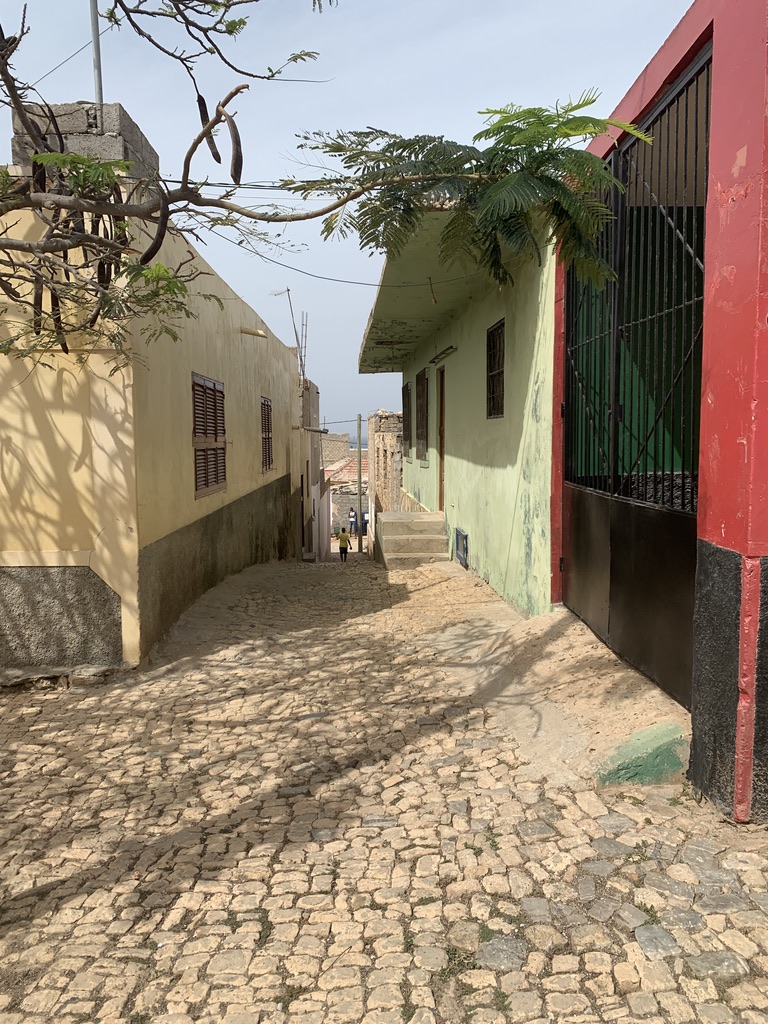

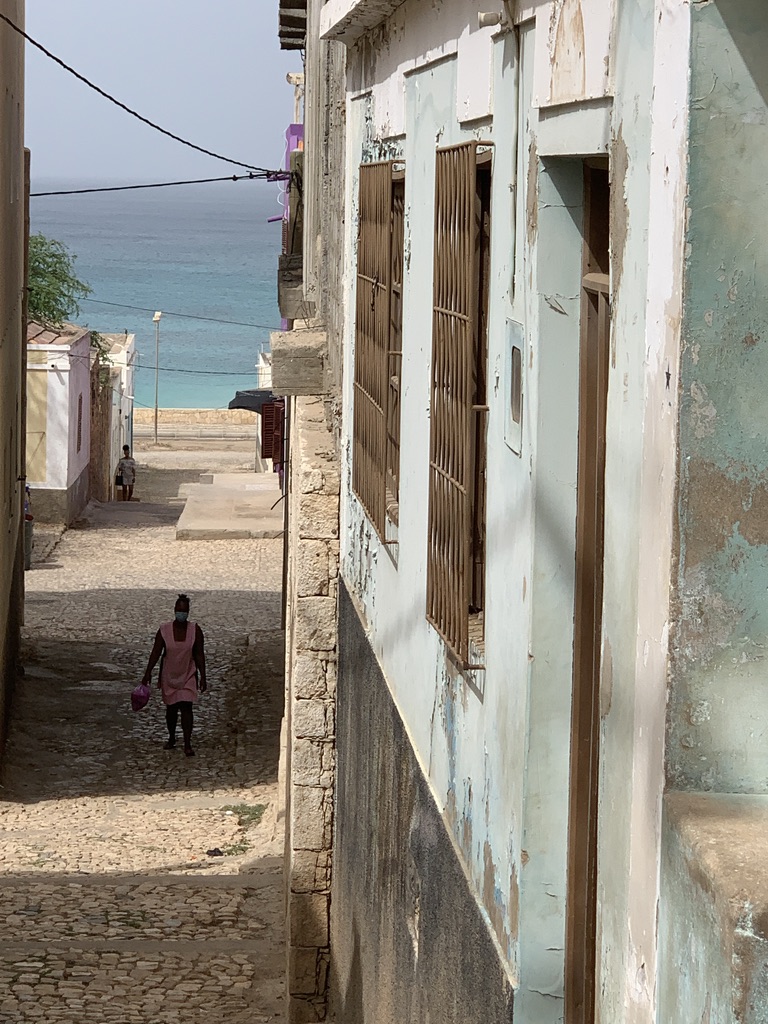

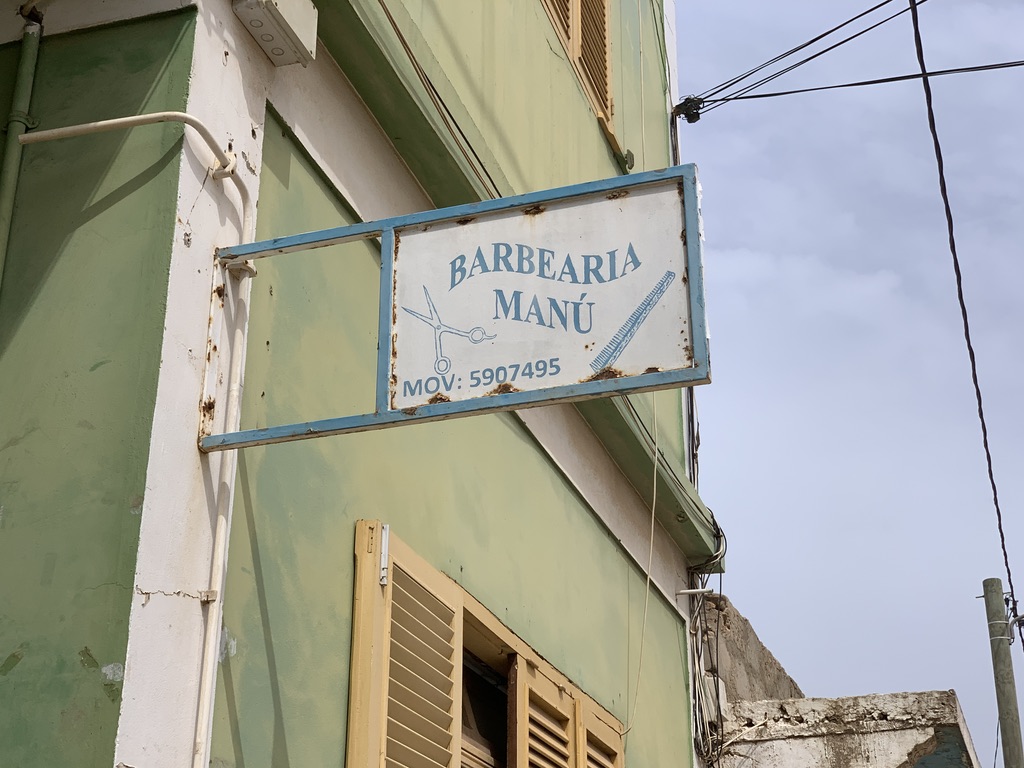
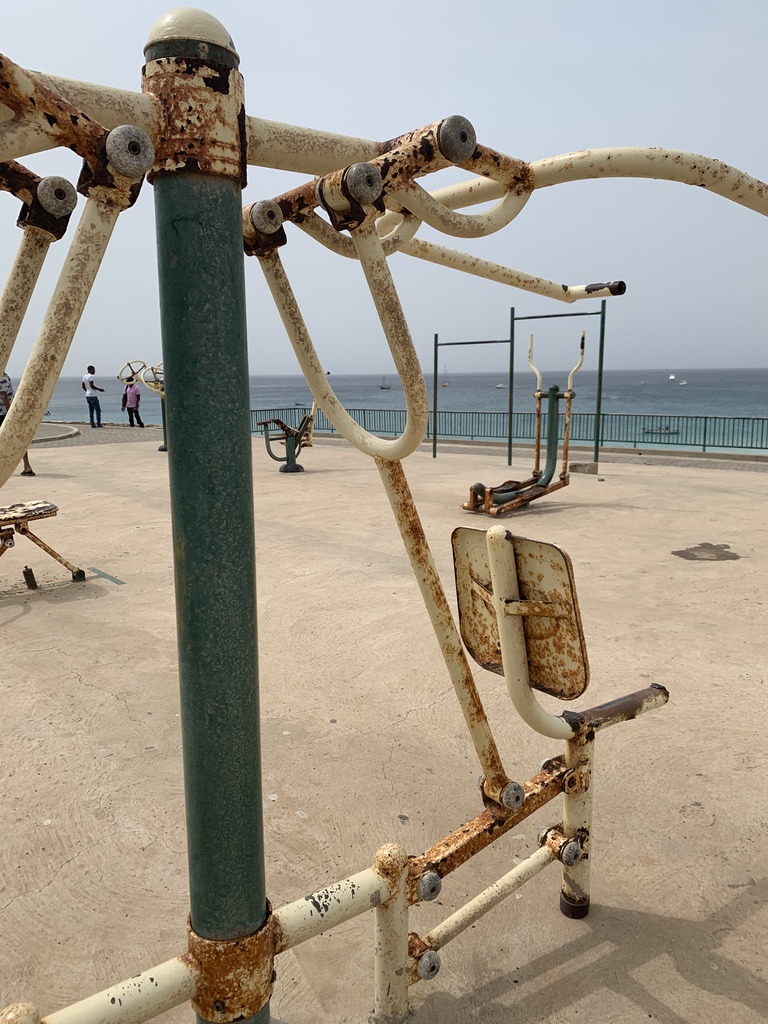

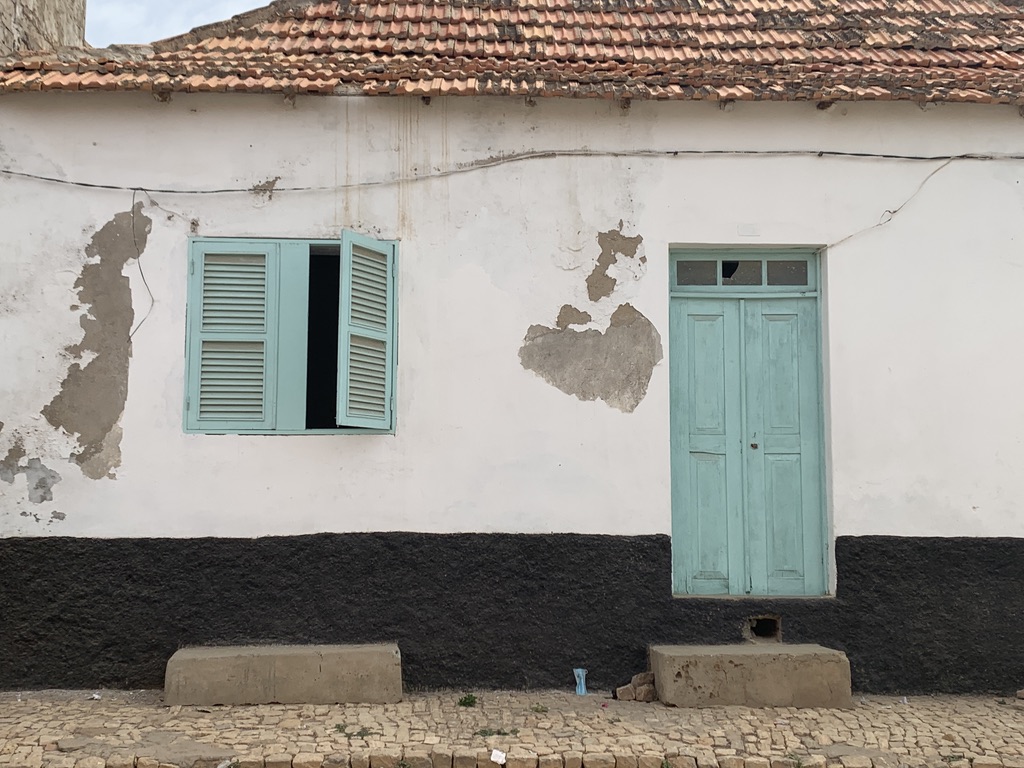
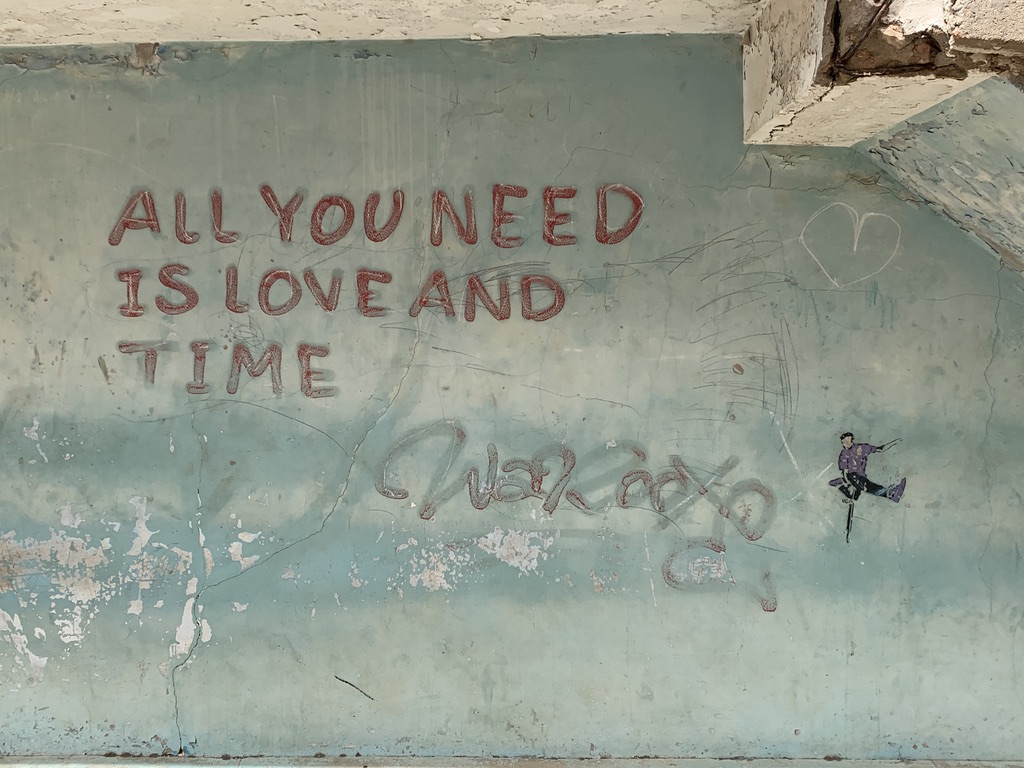
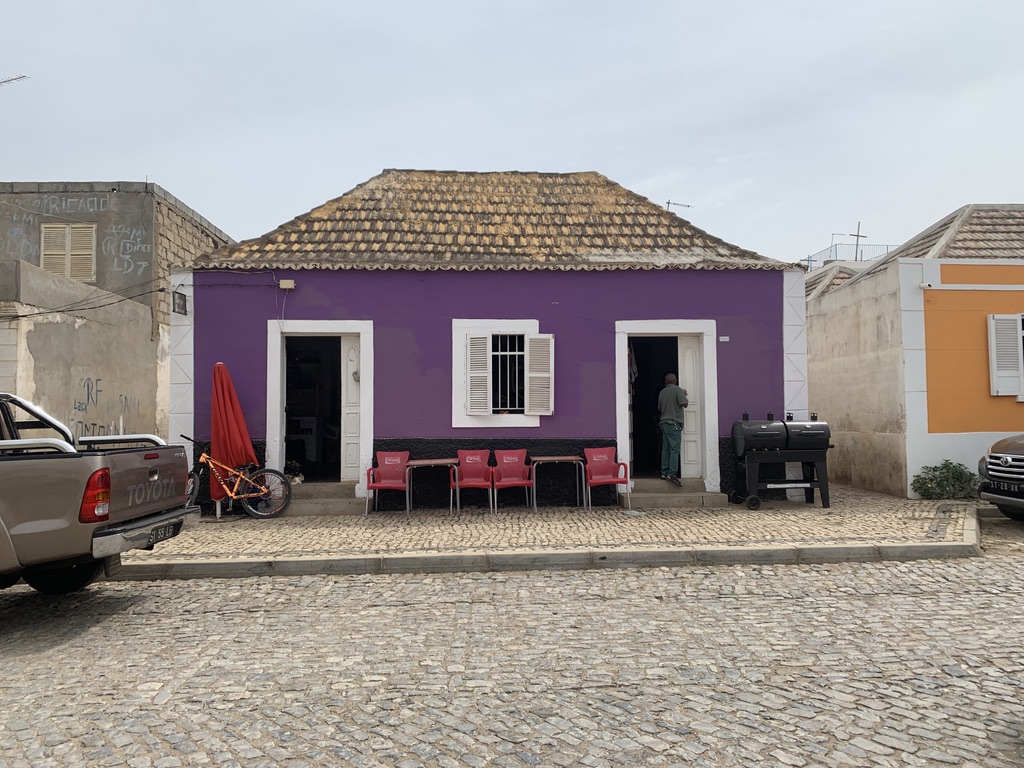

The fishermen bring in their catch, lay their nets to dry on the beach, their wives selling the fresh fish in big buckets along the staircase up to the main esplanade. It’s a lovely view. It reminds me so much of “my” village in Sénégal.
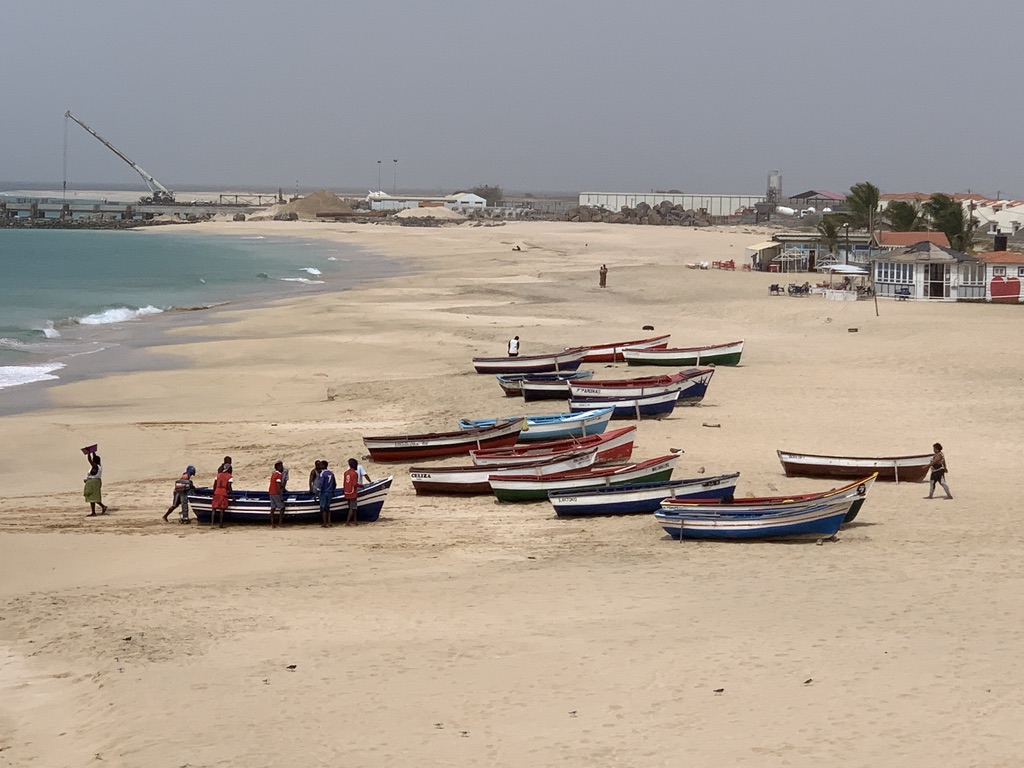
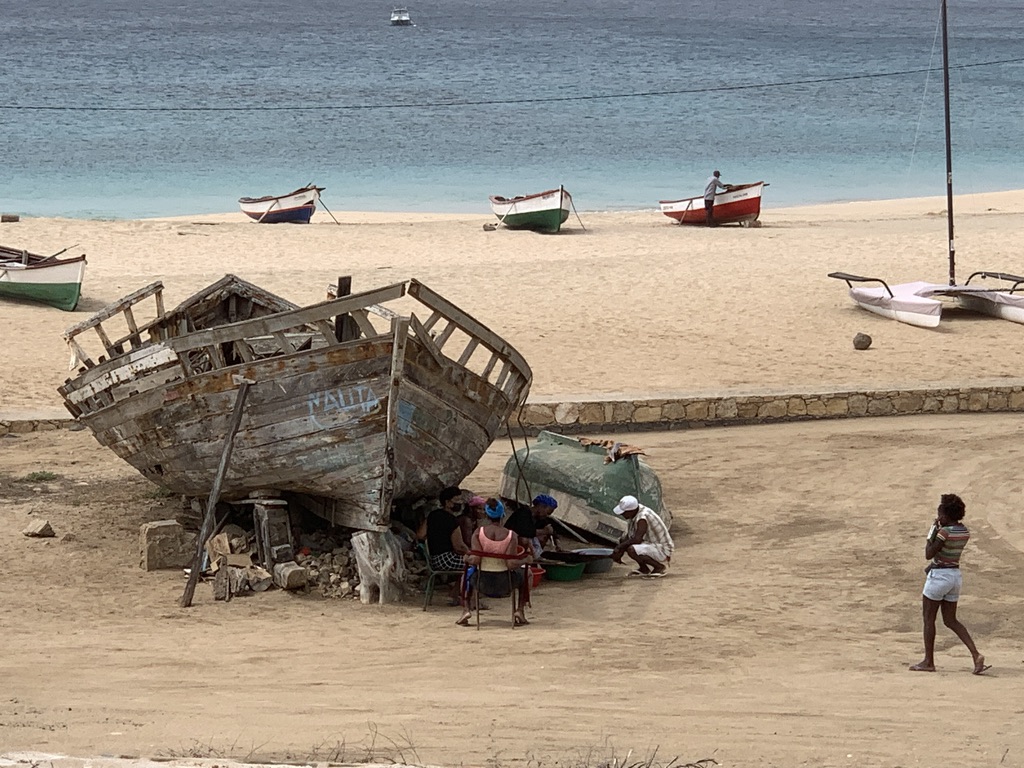

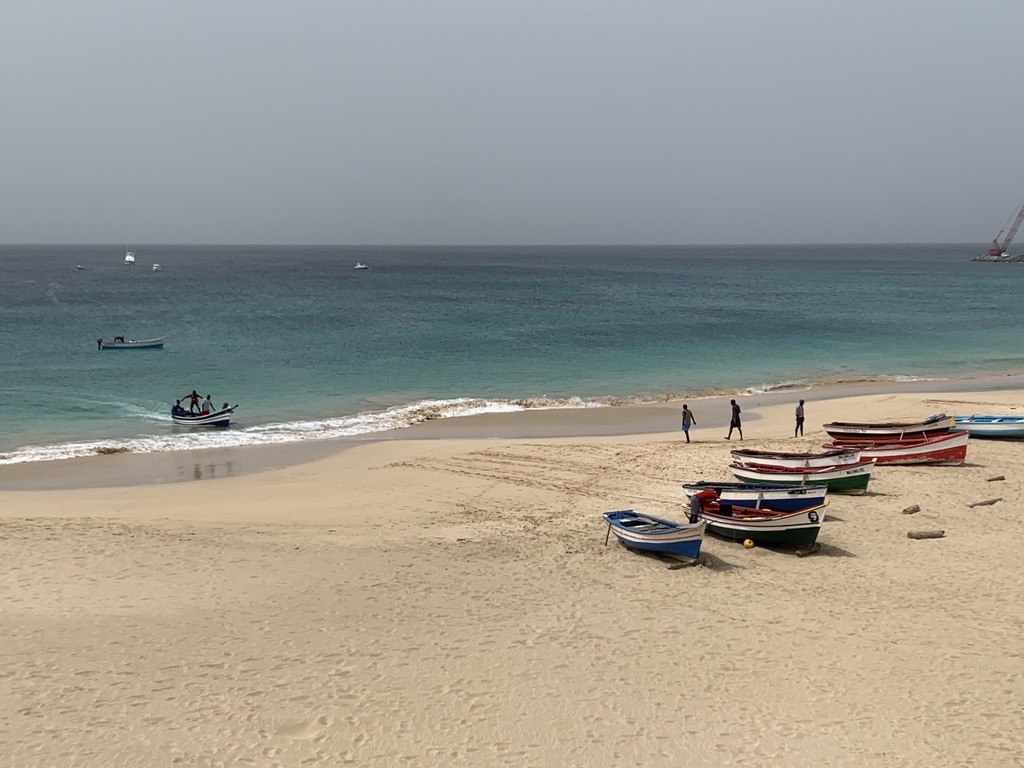

There is the “famous” Kaza Tropical down at the beach and I go there for a drink. Most guests are elderly Italian tourists, or are they regulars? I find my favourite Guava dink again and sit at the beach for quite some time before I venture into the water. At first it’s cold, but only for a short moment. Then it’s wonderfully refreshing, clear as a crystal, light Caribbean blue. Gorgeous!
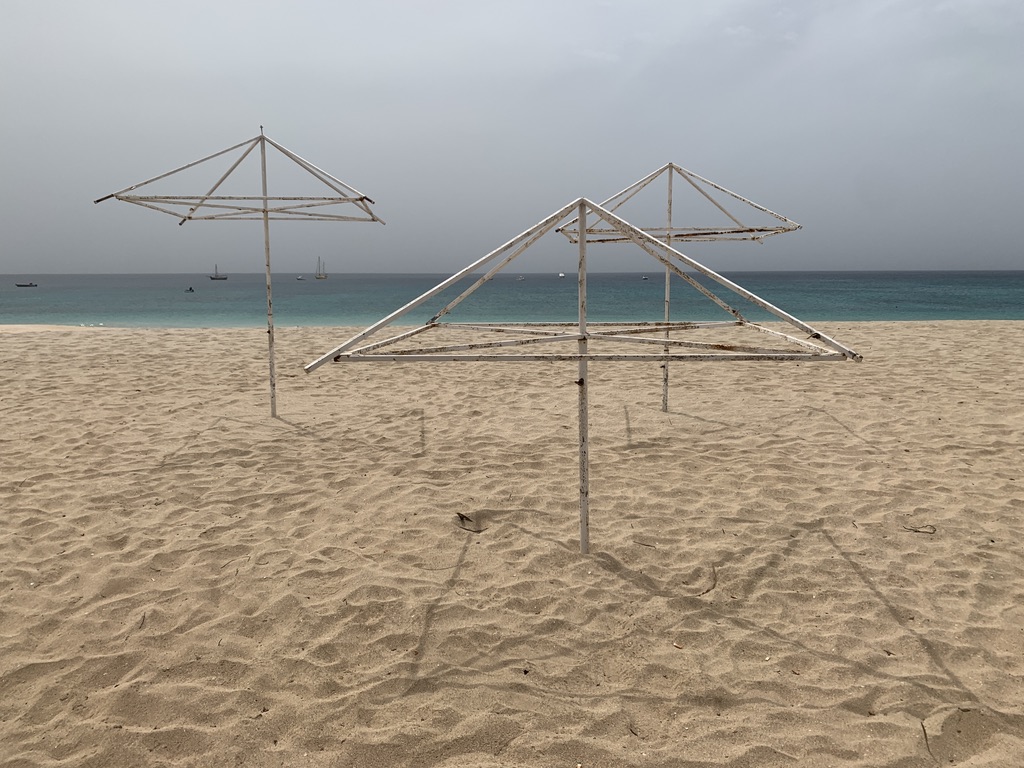
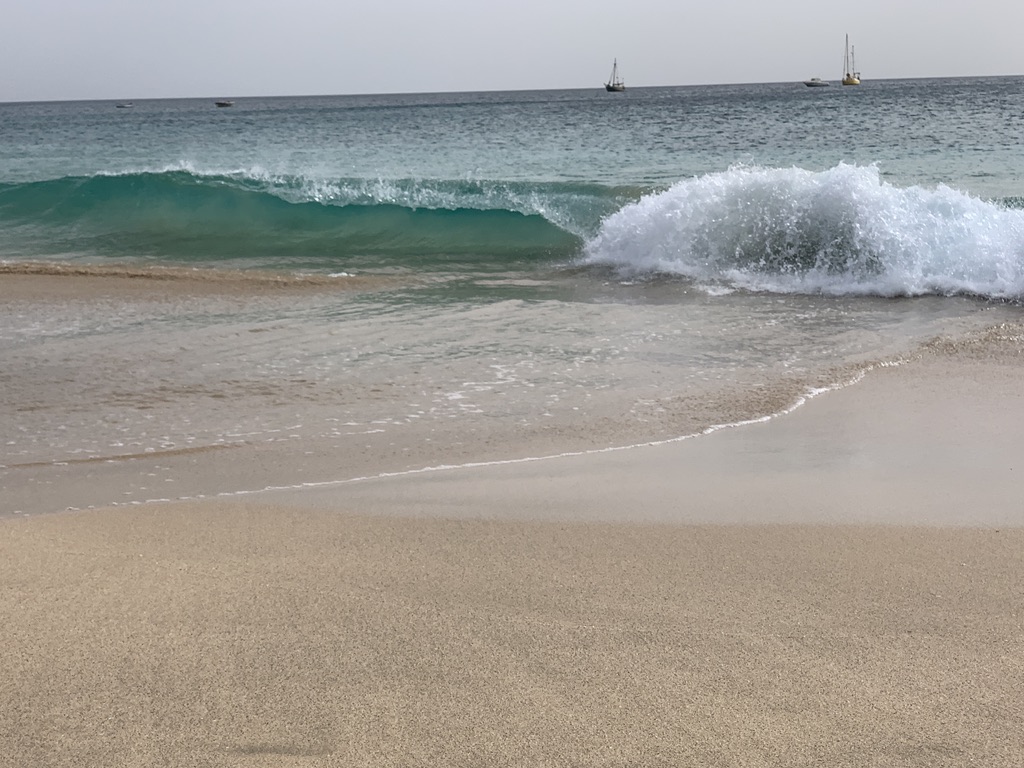
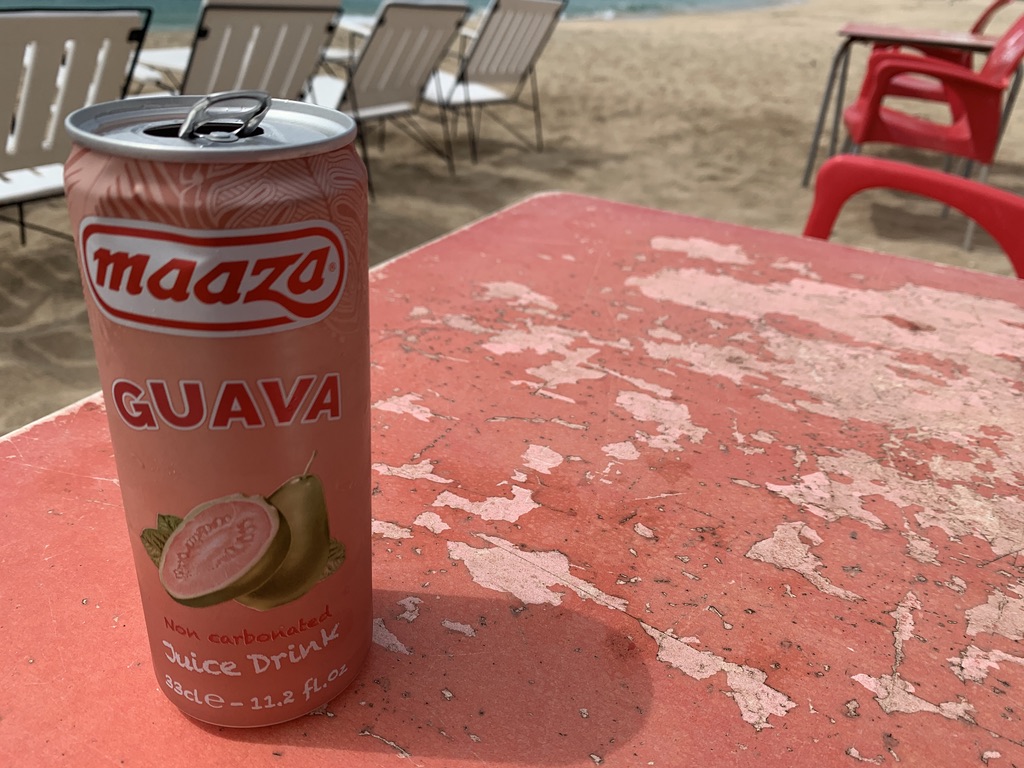
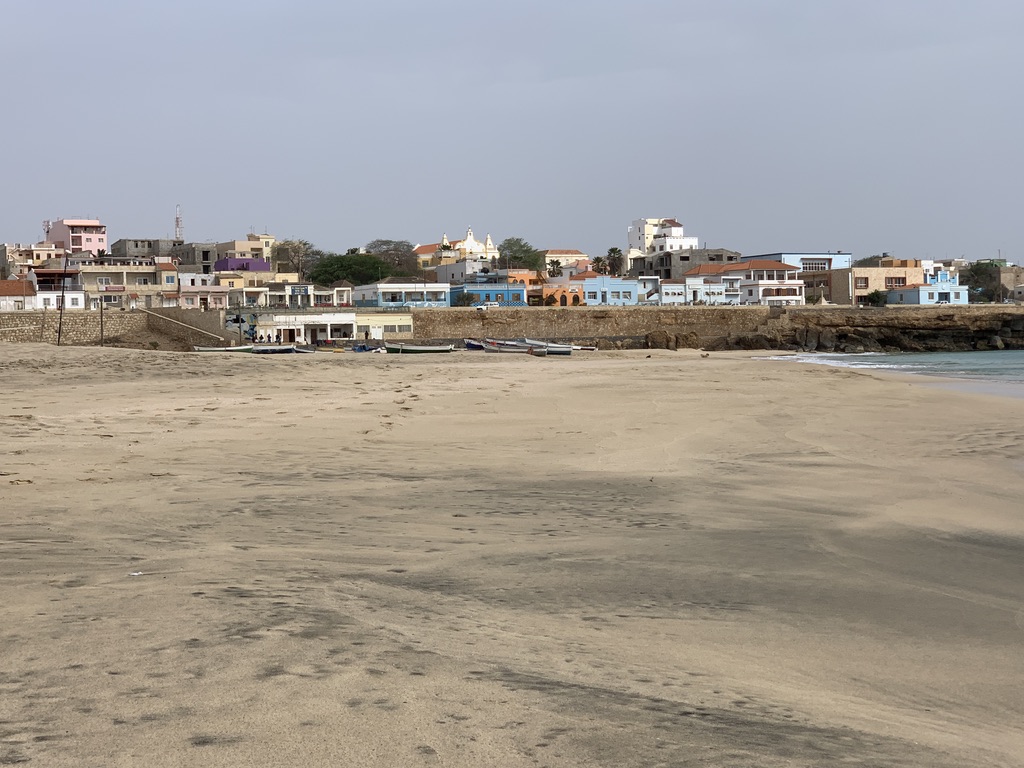
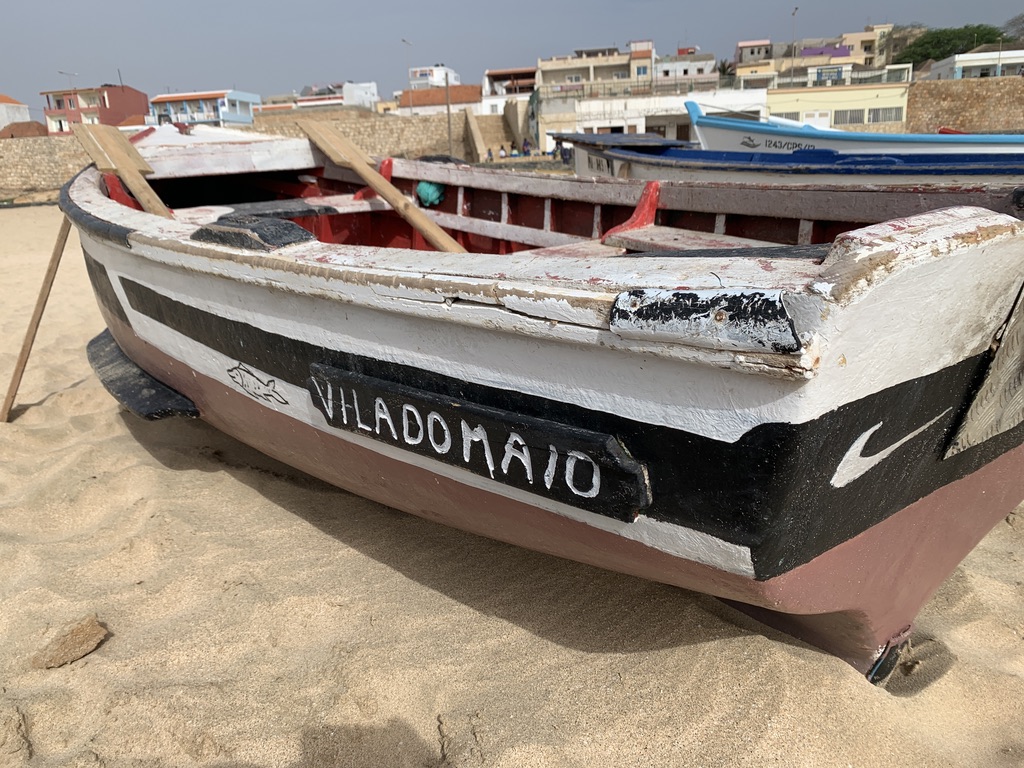

I have a shower before I go back to the Kaza Tropical for Happy Hour Caipirinhas! It’s a wonderful evening, tranquil, peaceful. I feel a little lonely, would like to have someone at my side tonight. Maybe one day …
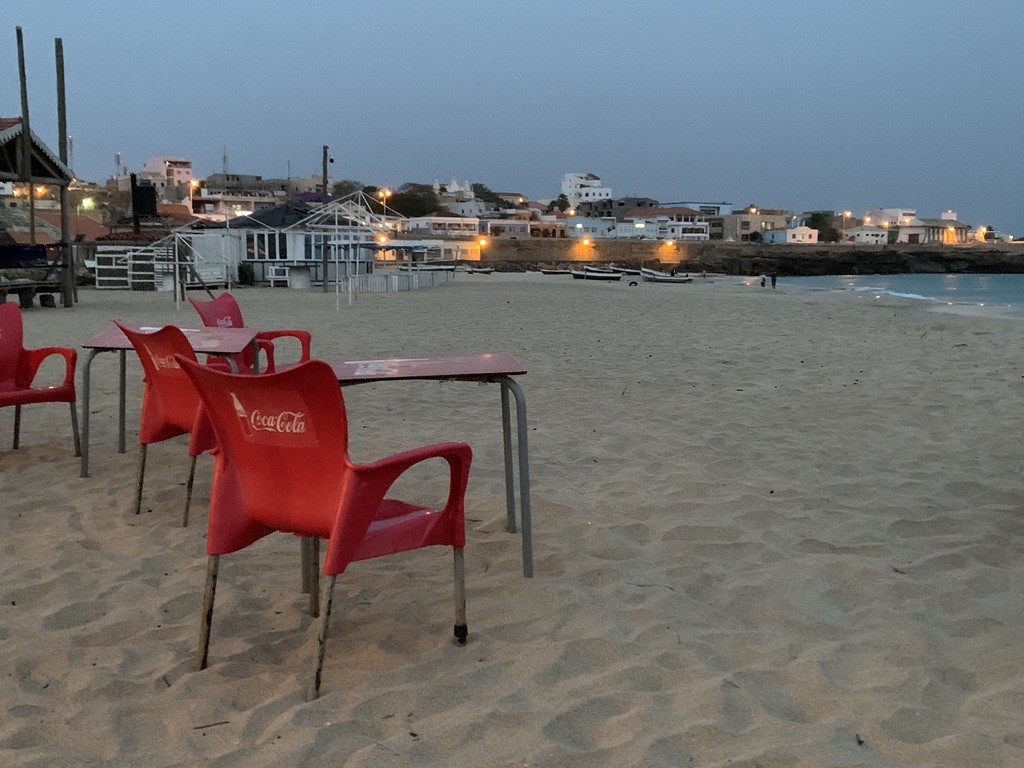
The next day my plan is to take a taxi/aluguer to Calheta and walk back to Vila do Maio. It’s about 14 km, so it should not take me more than 4 hours. I’ve met this Danish mother and her adult son the day before – non-vaccinated Covid refugees – who made it from Calheta to Morro (the village mid-way). So, I think I can do it. I find an aluguer quite quickly, but do not quite understand the driver when I want to pay him and he actually tries to take more from me than he should. But he gives back one of the 200 escudos bills reluctantly once I draw the price with my fingers in the air.

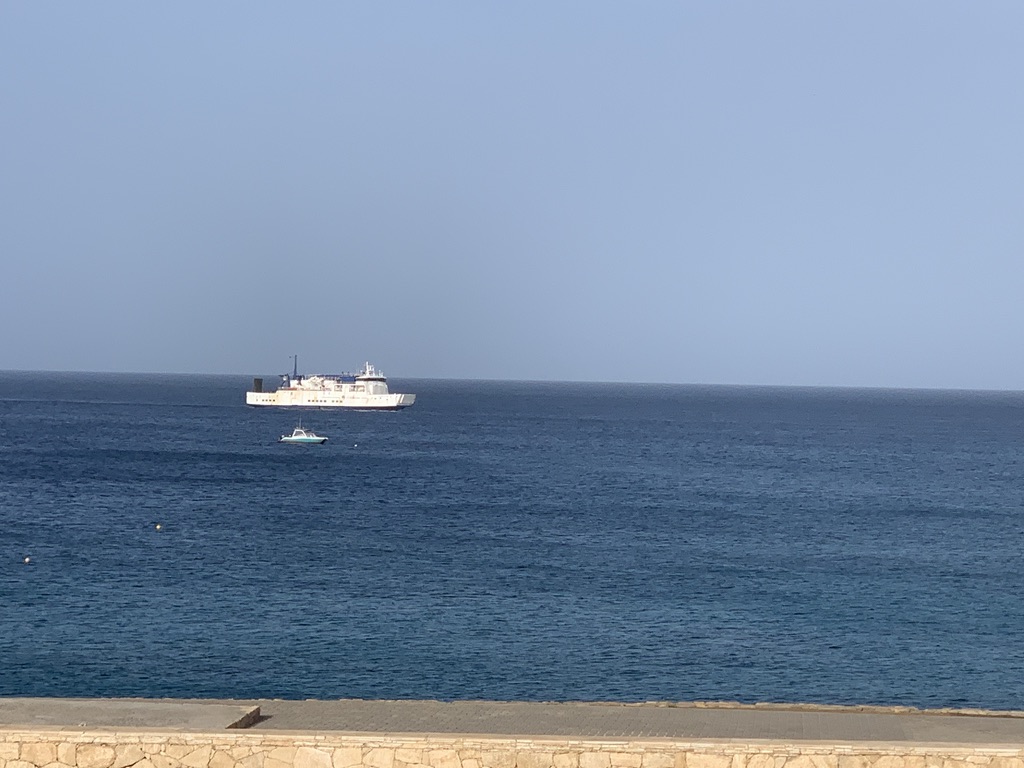
Once again I didn’t make it in time , of course – it’s already midday. I was at the bank this morning and changed some more Euros to Escudos. The rate is much better as when you pay in Euros directly – which is widely accepted on the Cape Verde Islands. Marina had told me that she had had to wait for 1h5 when she first wanted to change money in a bank.
I remember myself when I – for the first time in Sénégal – had to wait hours only to get into the bank, and another one or two inside, to be able to finally change my Swiss Francs into CFA. People where squeezing, and sweating and smelling, and pushing. It was all quite an adventure back then in 1995, but it was probably my worst money-changing experience.
I remember another one in Accra, capital of Ghana. Brigit and I used to keep most of our money in the document-belt we were wearing, only having a few bills at hand for every-day purchases. But when we had changed our money to Cedi – the Ghana currency – we actually had to carry our money in a plastic bag because there were no large bills available and the lady at the counter had given us packages of small bills. I felt like having robbed a bank, even though I was only carrying approximately Fr. 200.-.
In order to be prepared for prolonged waiting sessions I’ve taken my book with me – I’ve finally finished the „Guernsey Literary and Potato Peel Pie Society“ (a book about the German occupation on the channel island Guernsey), which I liked quite a bit in the end even though the start was a bit tough (it’s all written in letters, you’ve to get used to it). Now, fitting for Africa, I finally read Chinua Achebe’s “Things Fall Apart”, a story placed in a traditional Ibo clan village of lower Nigeria, written in 1958, an internationally acknowledged book about the impact the appearance of the white (missionary) men had on African culture and life.
But here the money-changing process does not take long at all. There’s one lady being served and once she has left it takes maybe five minutes to change my Euros into Escudos.
Yet, the money-changing took some time and so once again I arrive only at midday in Calheta. Here, the feel is even more Africa. The houses are all nicely painted in various colours, some of them with patterns. Chicks run around freely – happy chicks. Chicks that you do not have to feel too sorry about if you eat them, as they, at least had a happy life. Some children walk up and down the street, some young lads play table-soccer in the shade of a sun-sail. It’s very quiet.
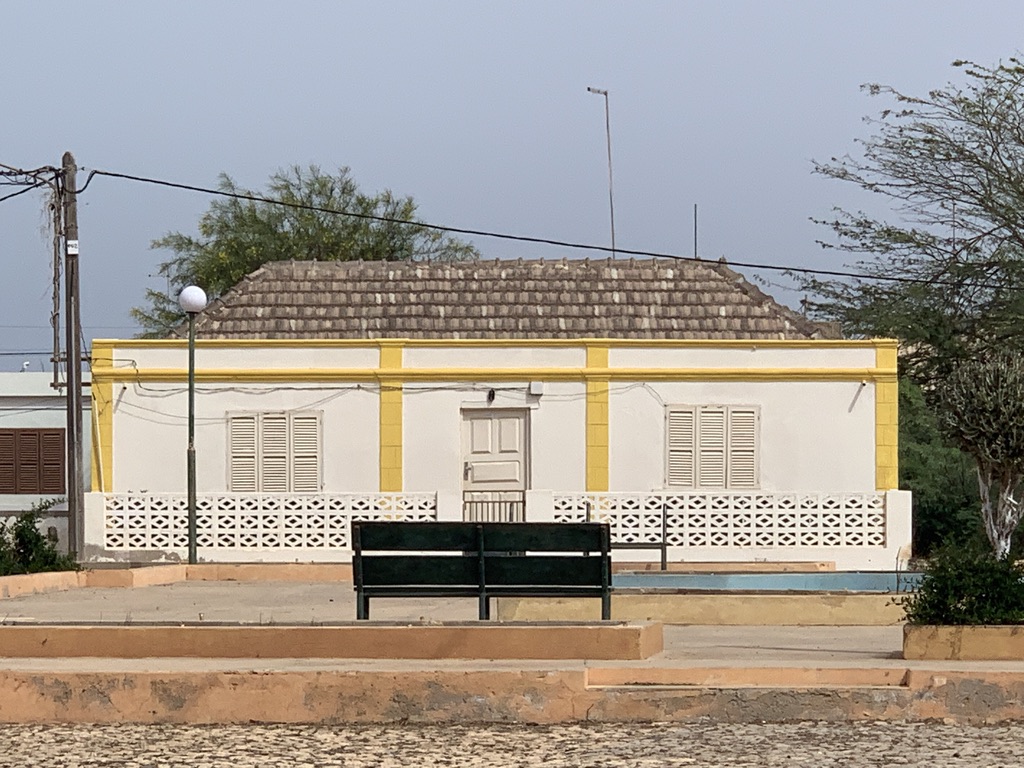
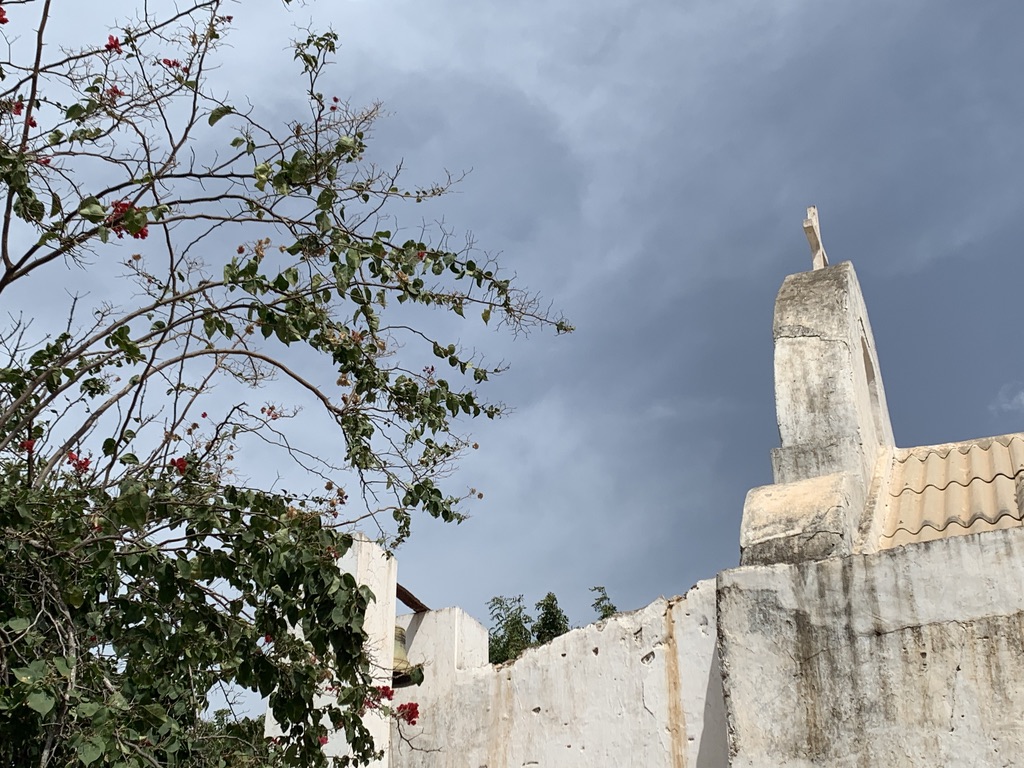
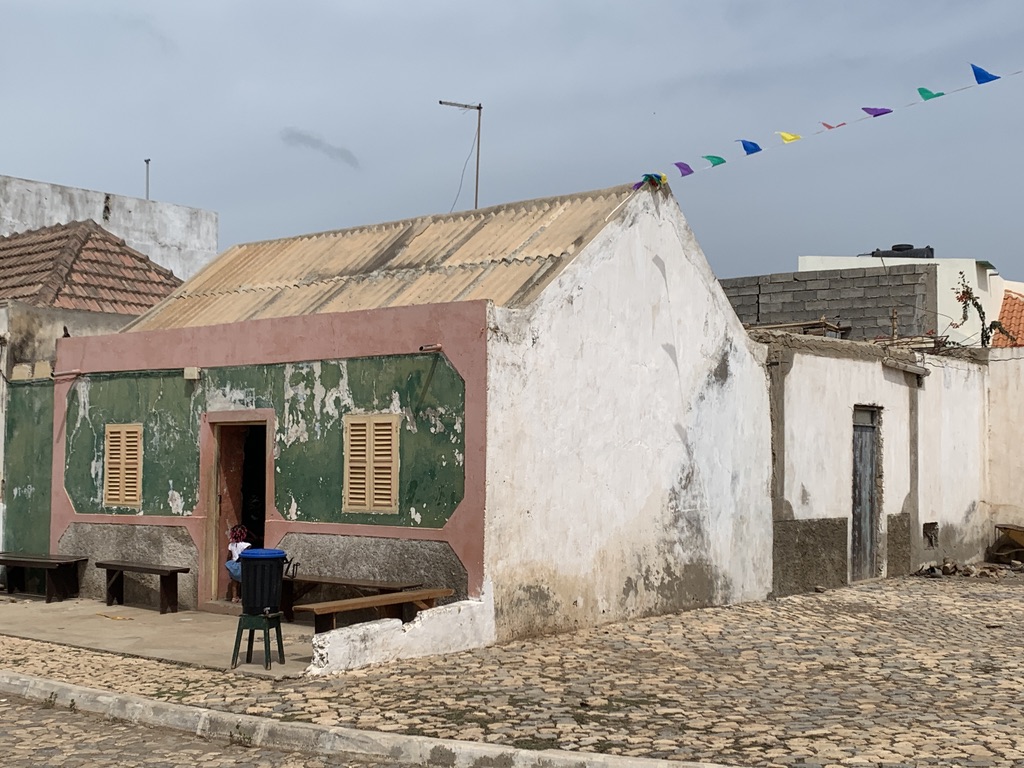
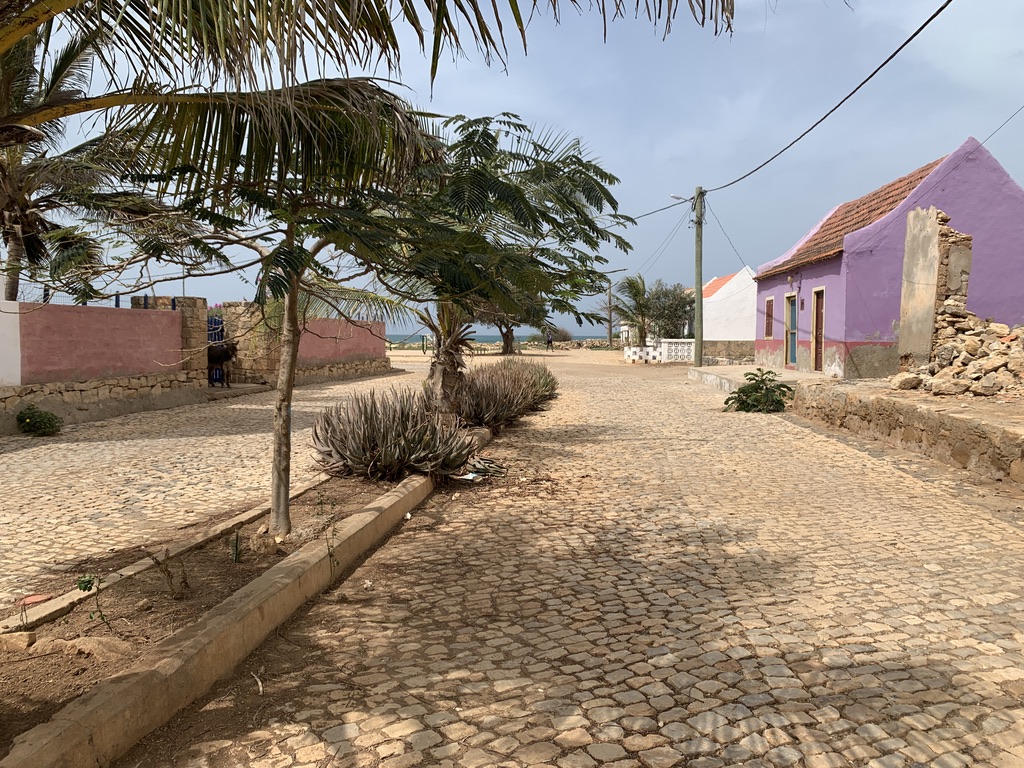
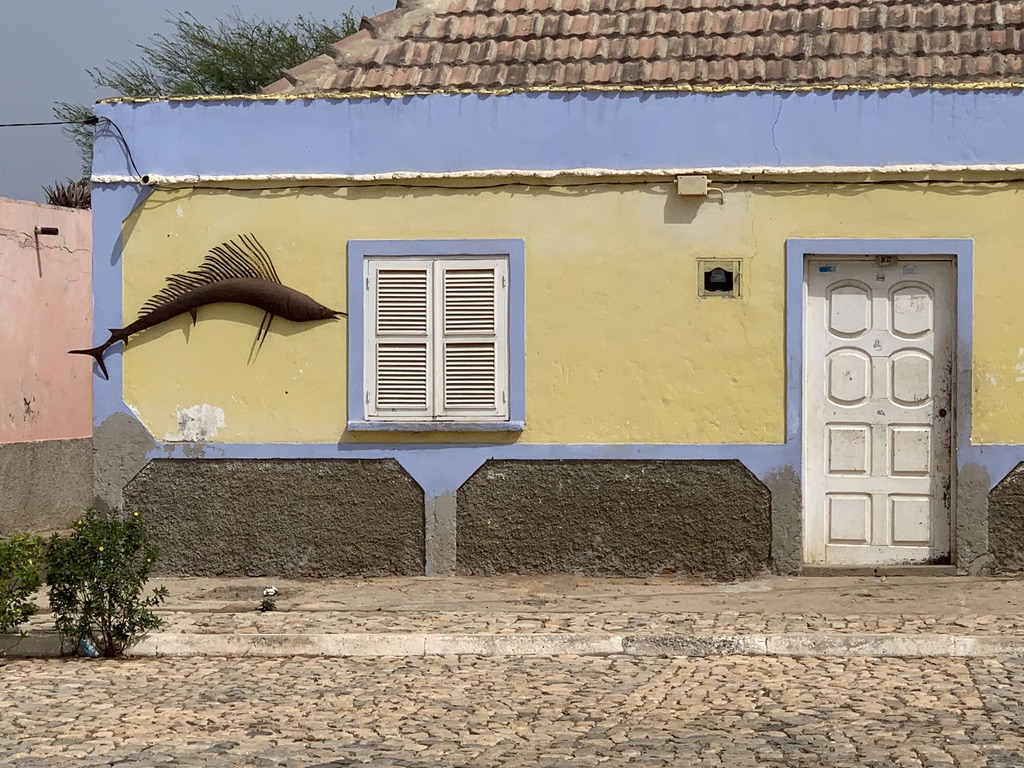
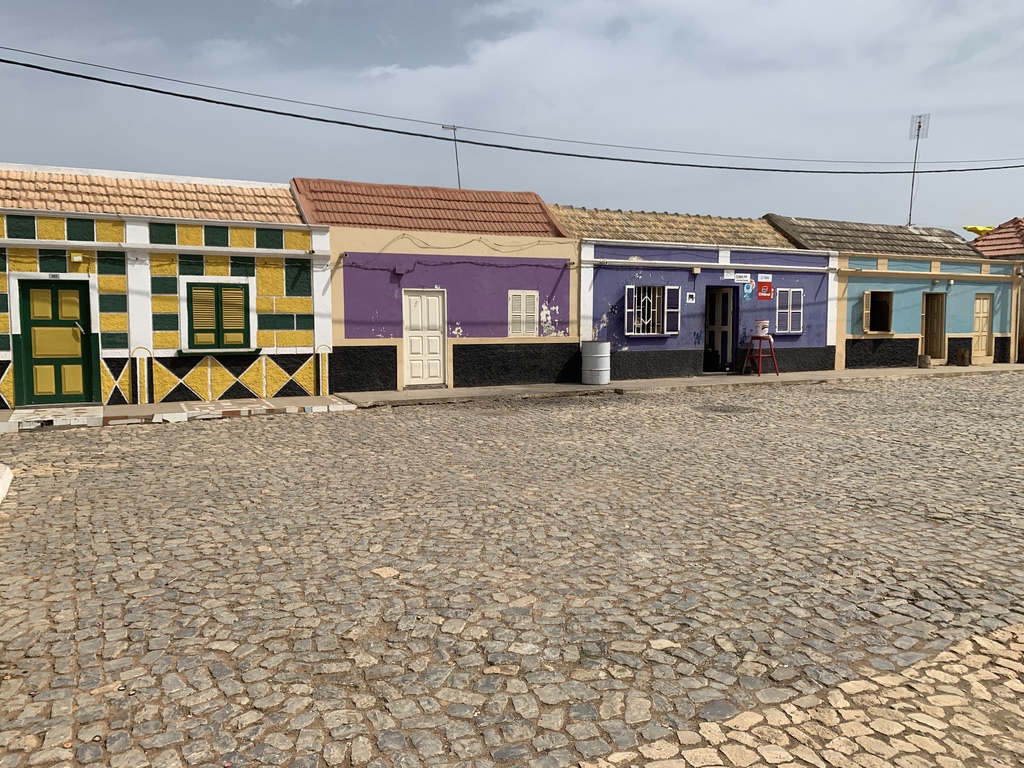
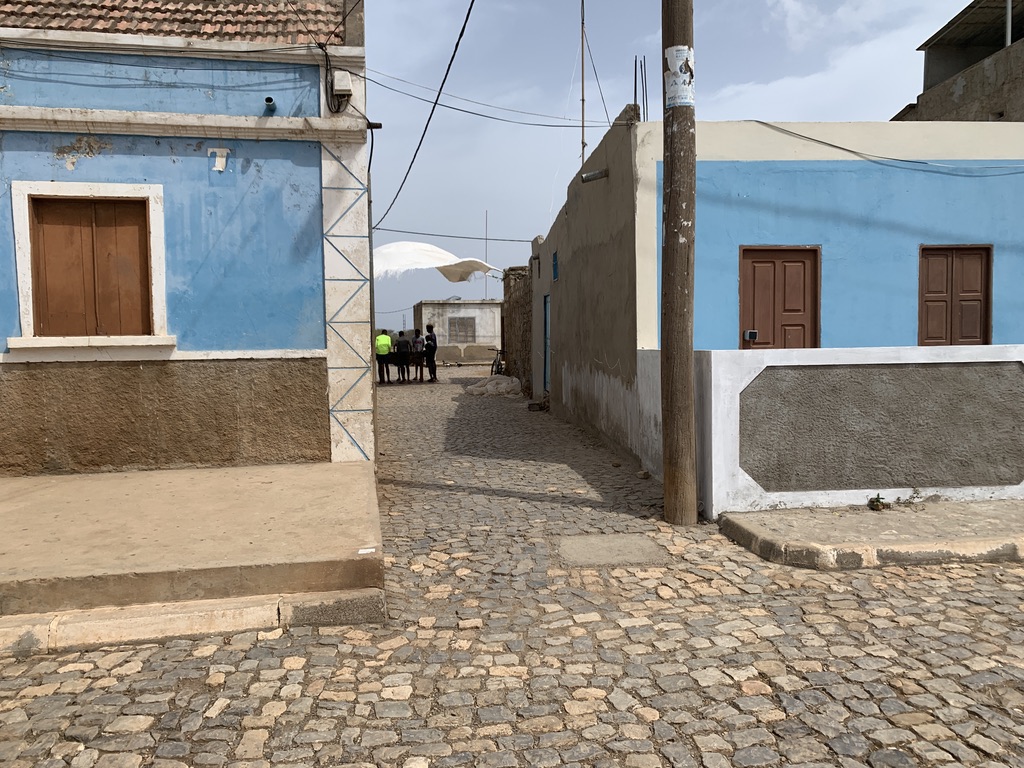
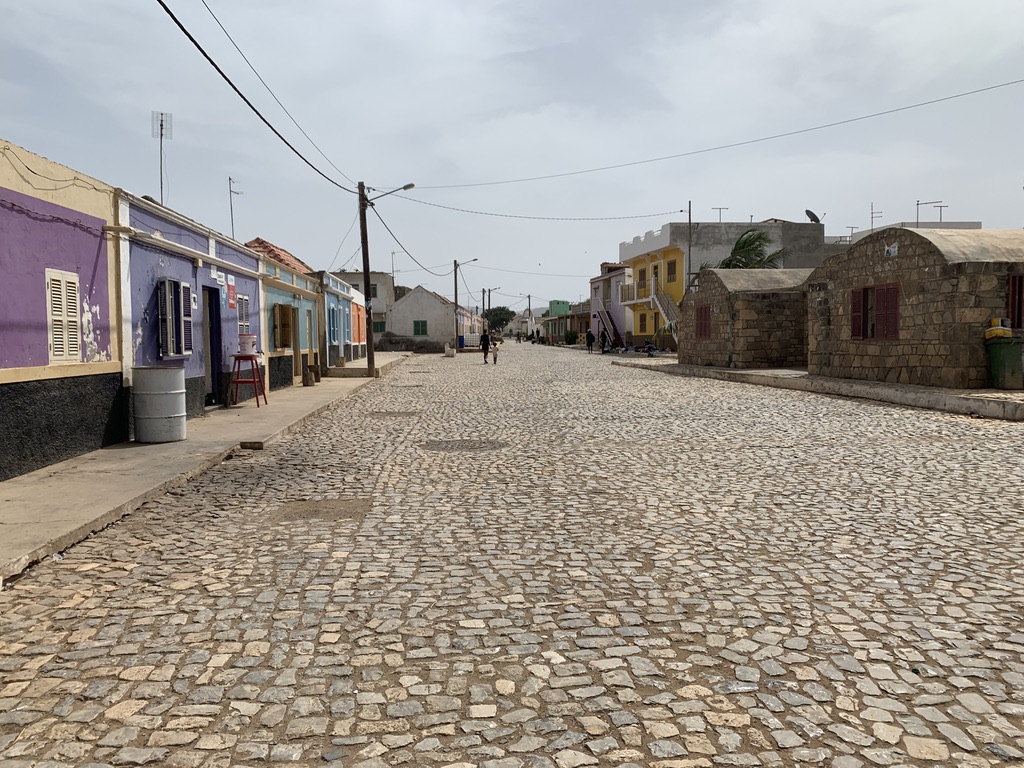
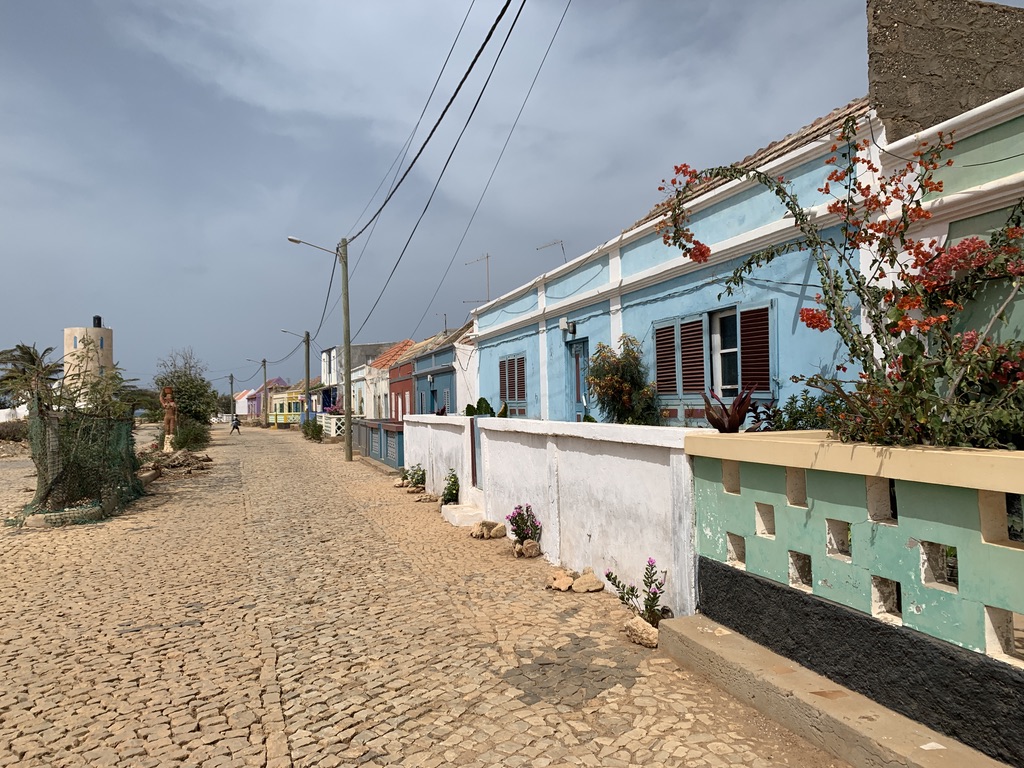
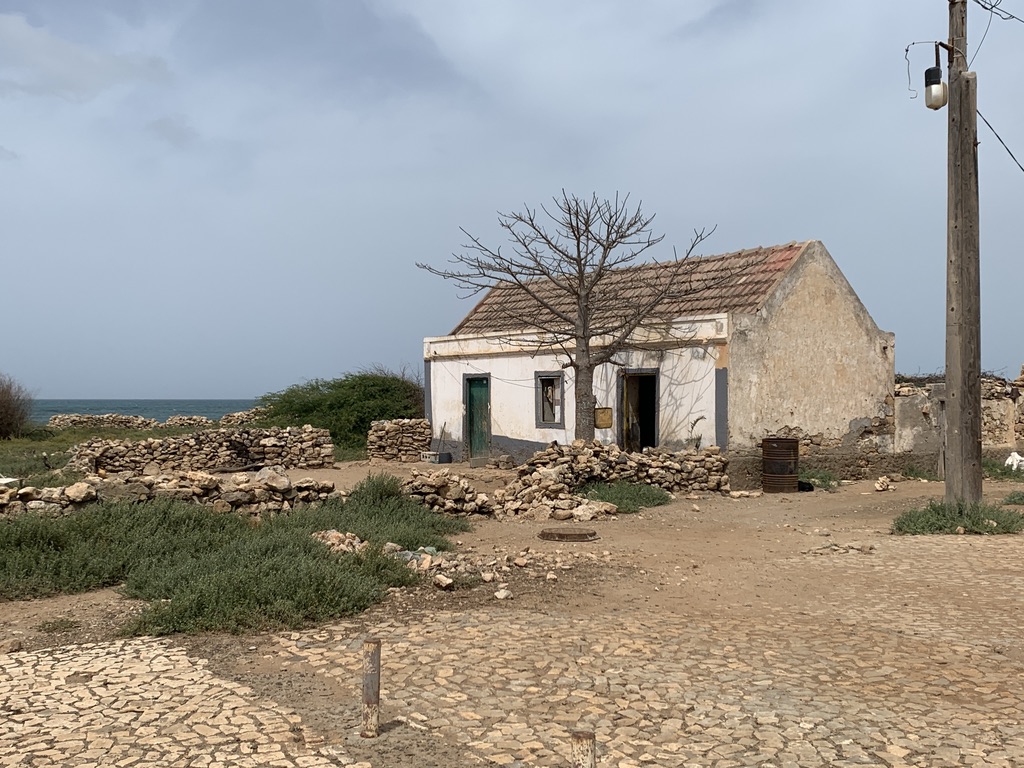
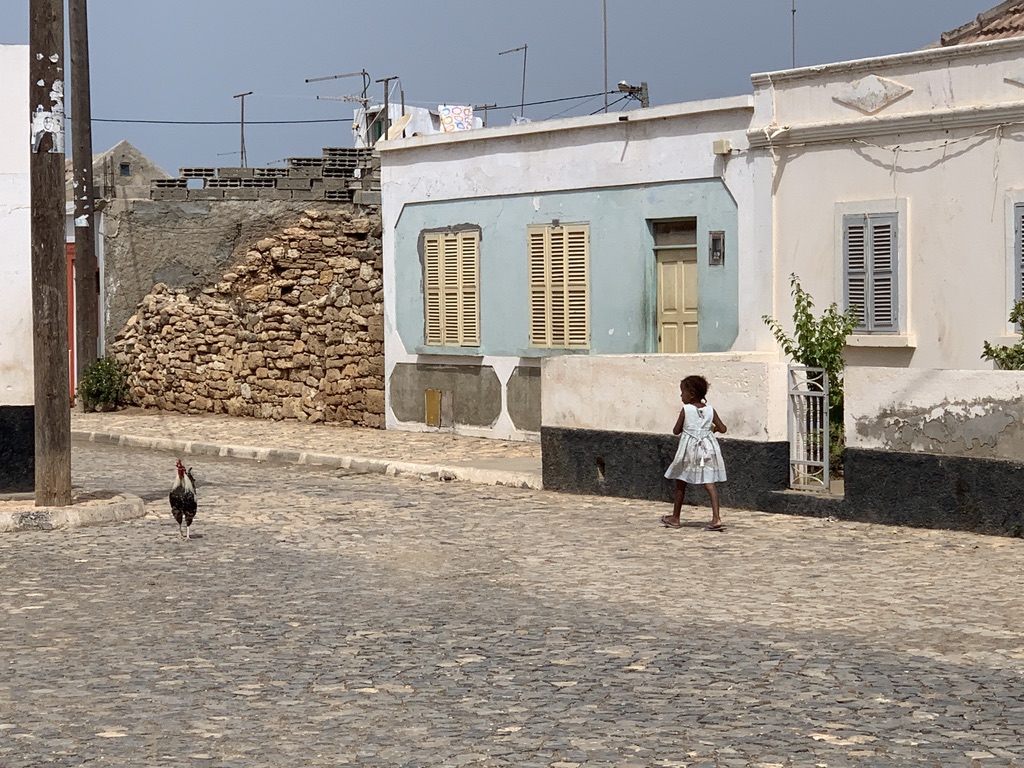
I find the place, the hostel, where I could have stayed in Calheta. Two places, in fact, either in the tower or the oratory converted into guestrooms. An extremely nice place in an extremely deserted place. My agency was right to place me in Vila do Maio – even the capital is so quiet.
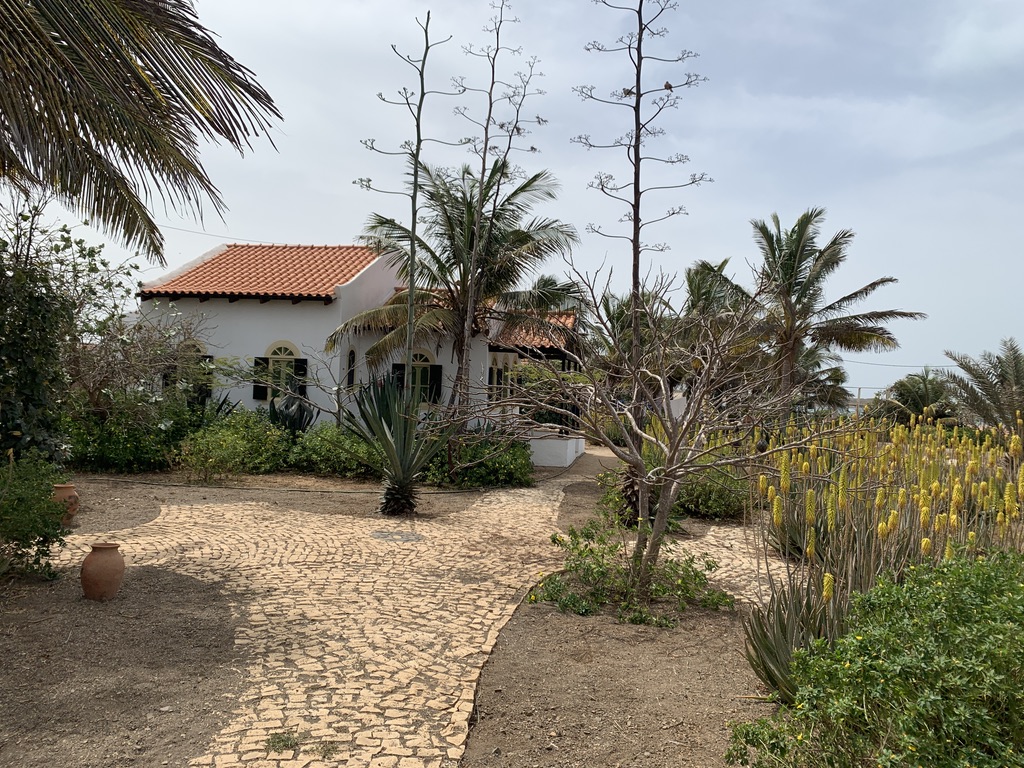
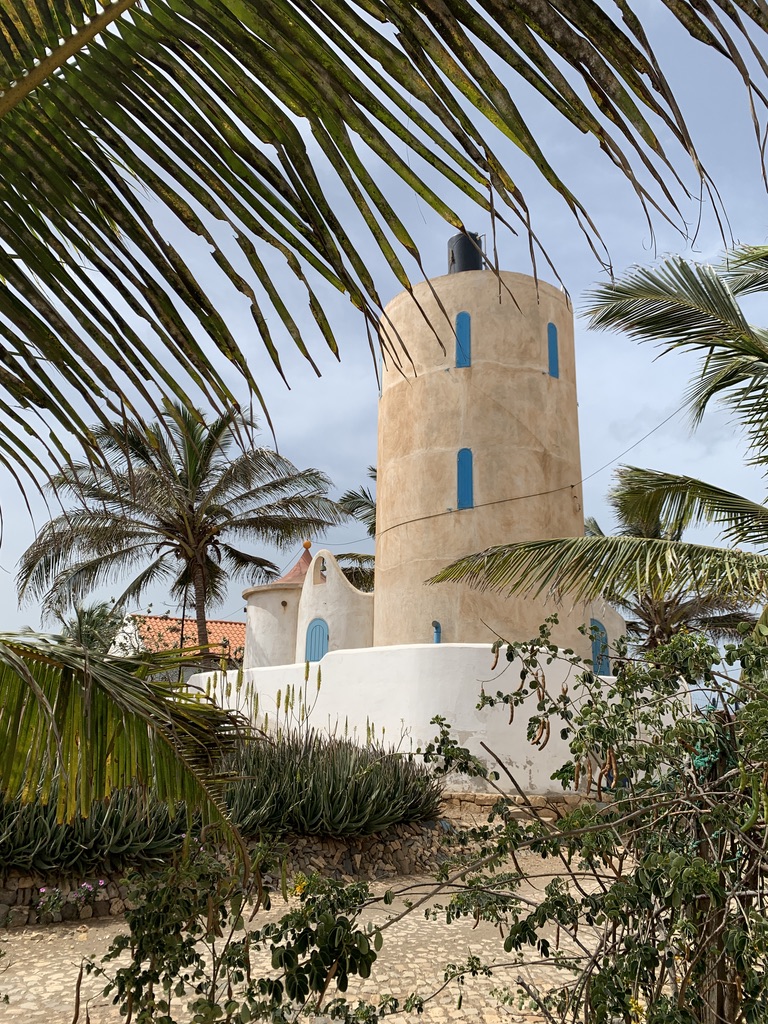

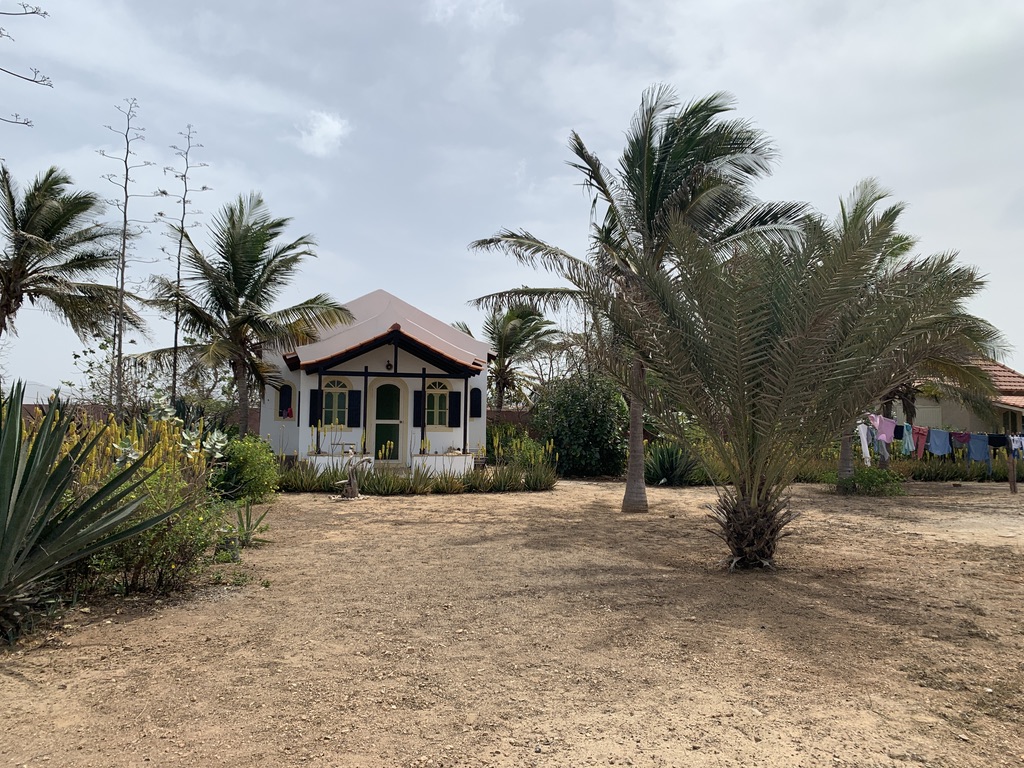
Then I set out for my walk back. I will walk the about six kms to Morro and then decide whether I will go on or take the aluguer back to Vila do Maio. It’s hot. There’s a young man jogging up and down the small beach at Calheta. There’s also a woman with some children bathing. Otherwise the place is deserted.
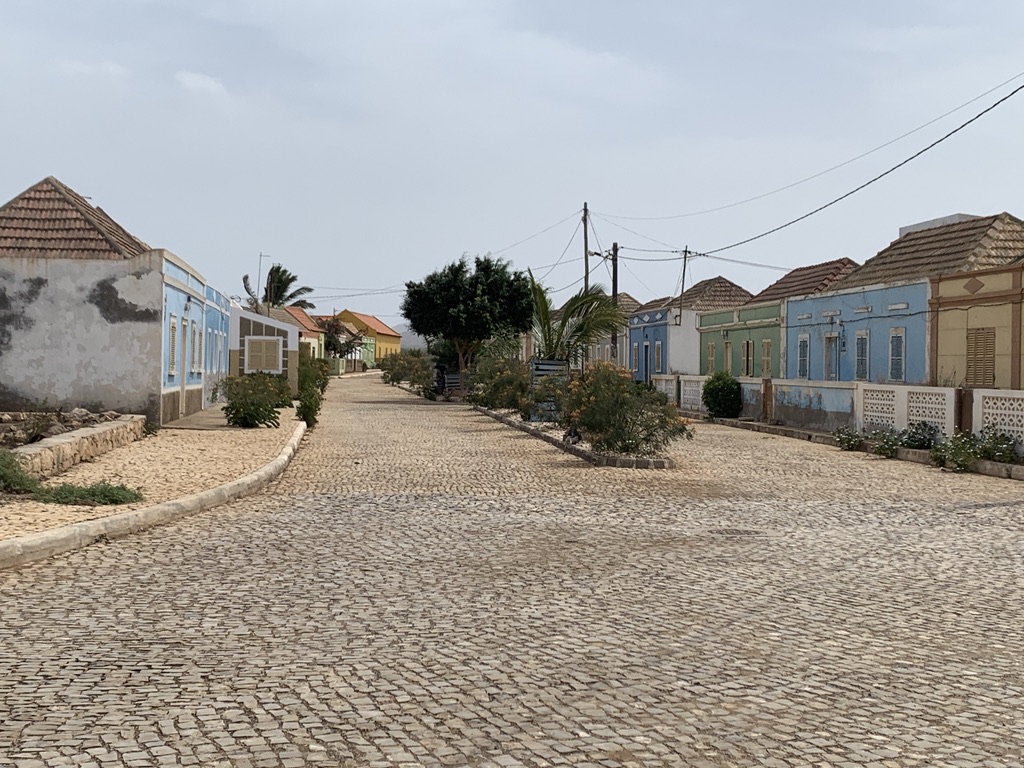
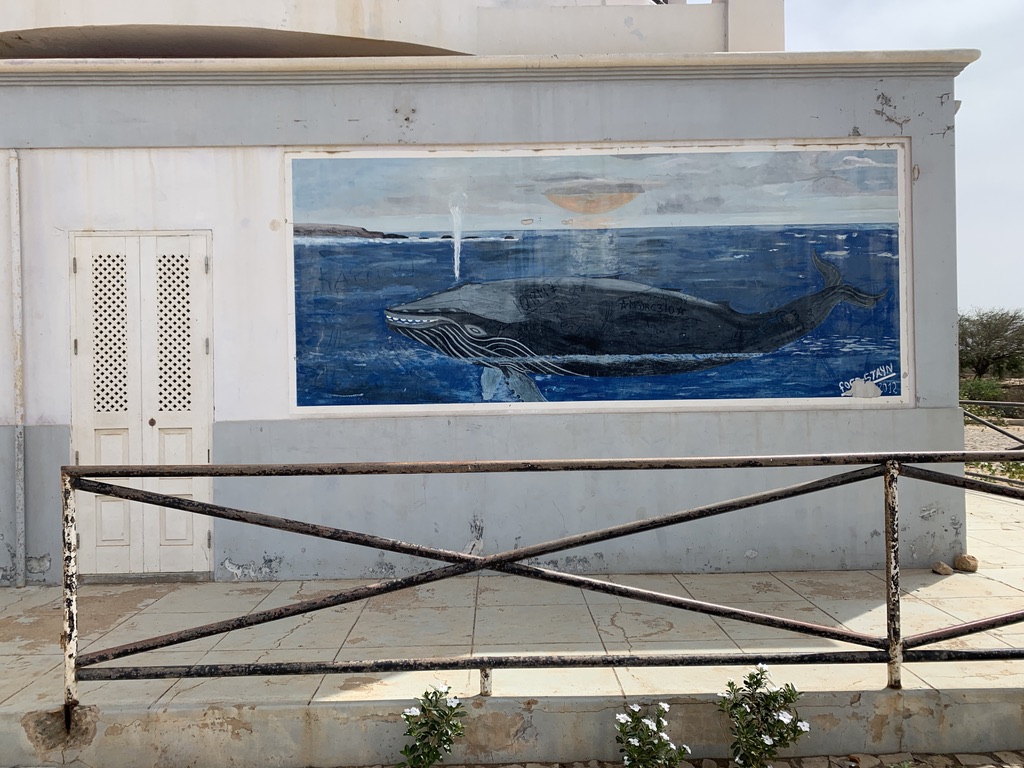

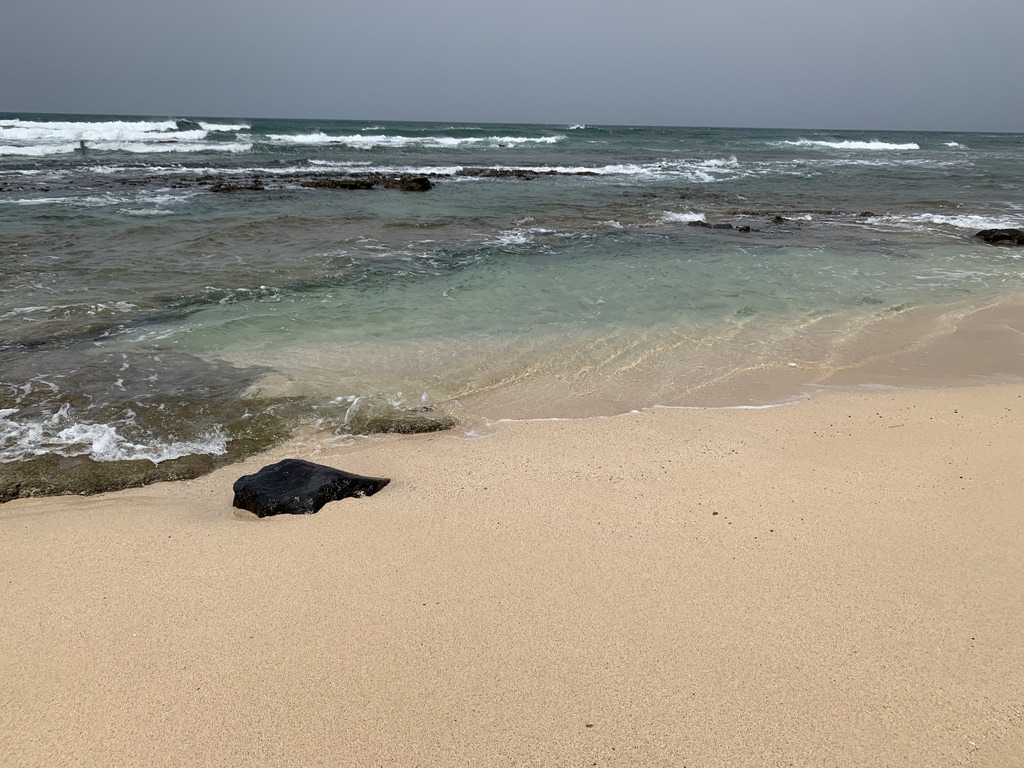

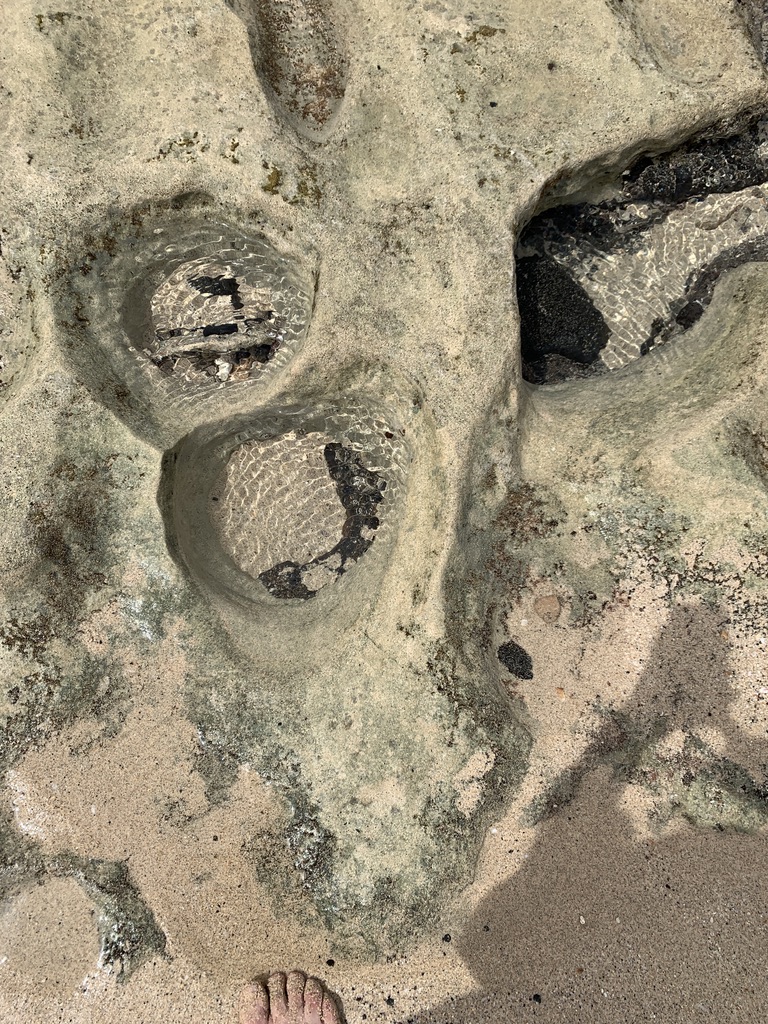
After my Mindelo experience I hope that the man is not going to follow me. I asked locals if it was safe and they said it was. My hotel knows where I was going, so if I had not come back at a certain time …
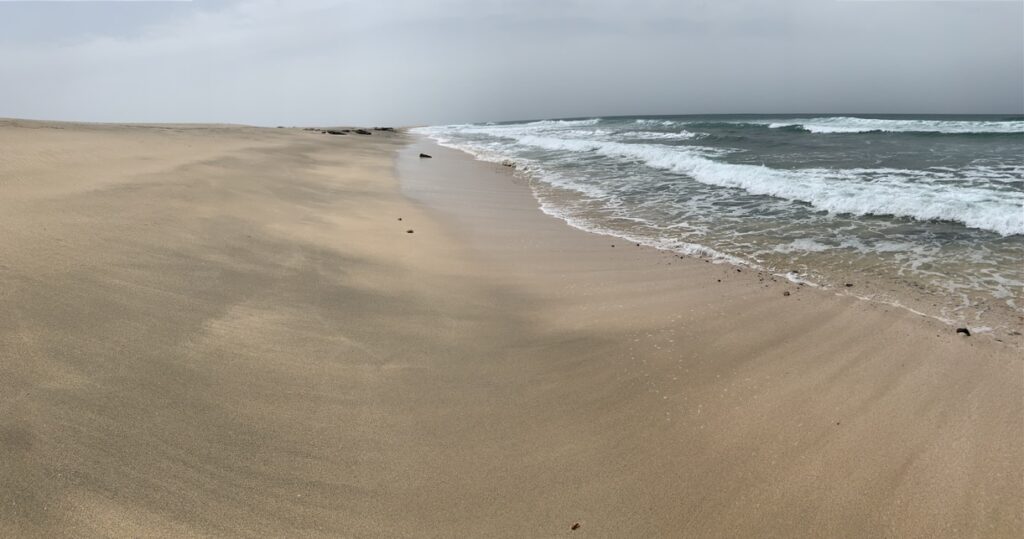
I pick up a sharp edged stone, anyway, and carry it all the way back to Vilo do Maio, just in case. But all is peaceful, the wind pushes me gently from behind, the sea is spectacular here, the beach too. Black volcanic sand mixes with white sand that is blown over with the warm Harmattan wind from the Sahara. The white grains are bigger than the black ones, thus heavier and so the two sands create wonderful patterns.
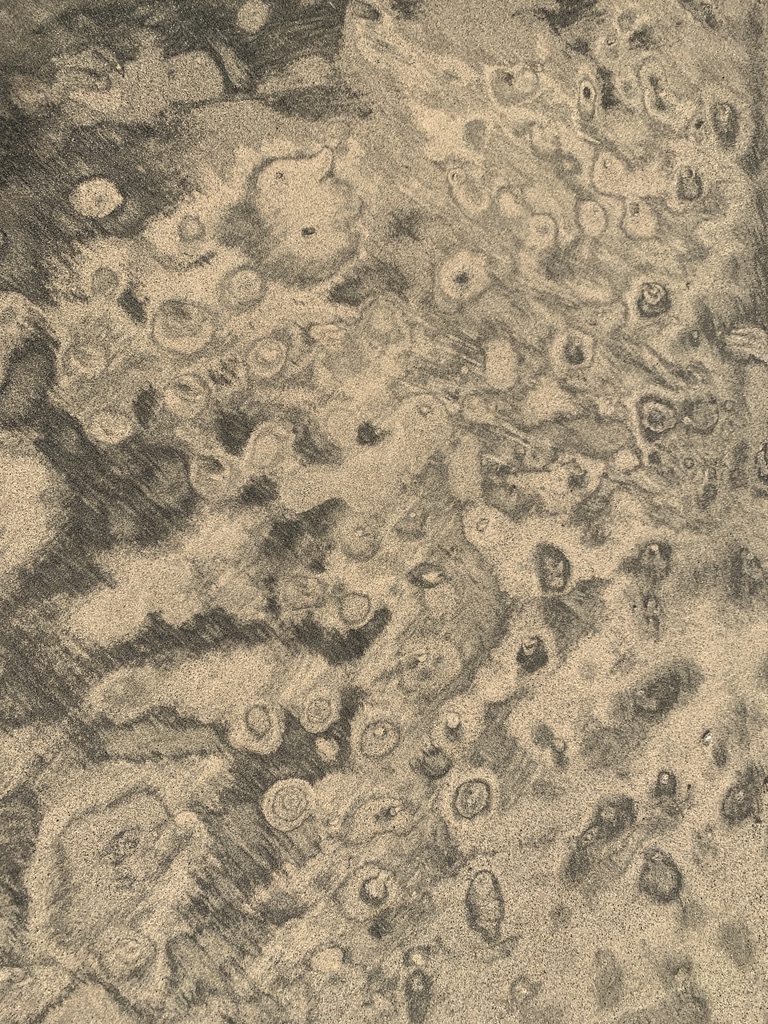
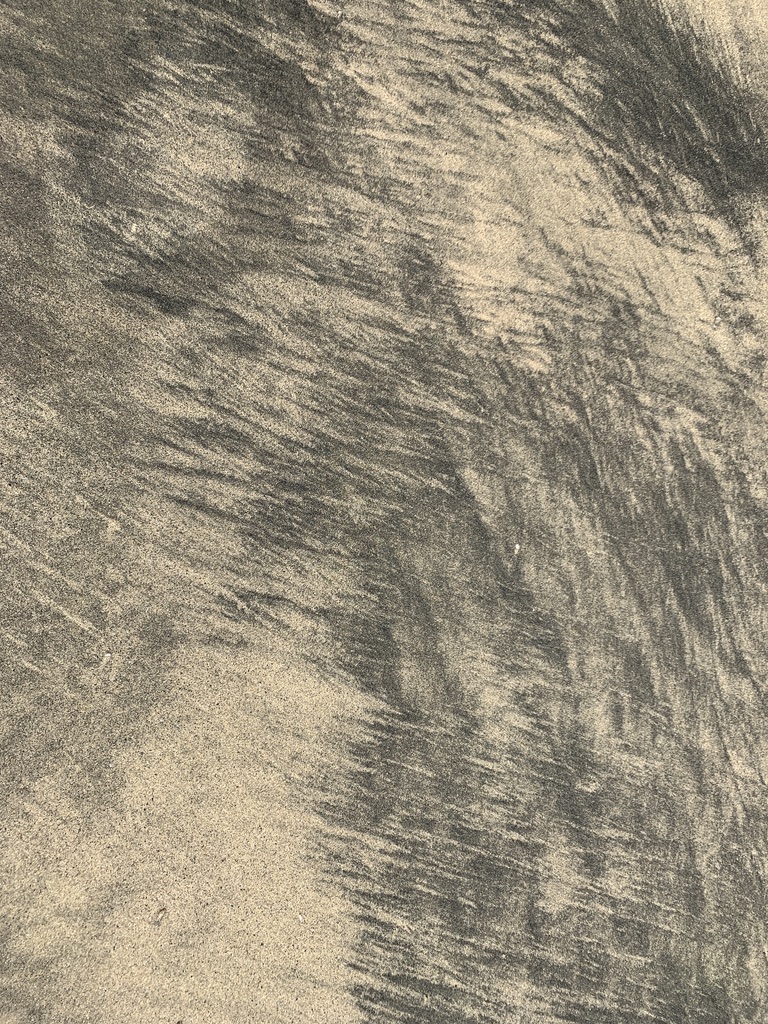
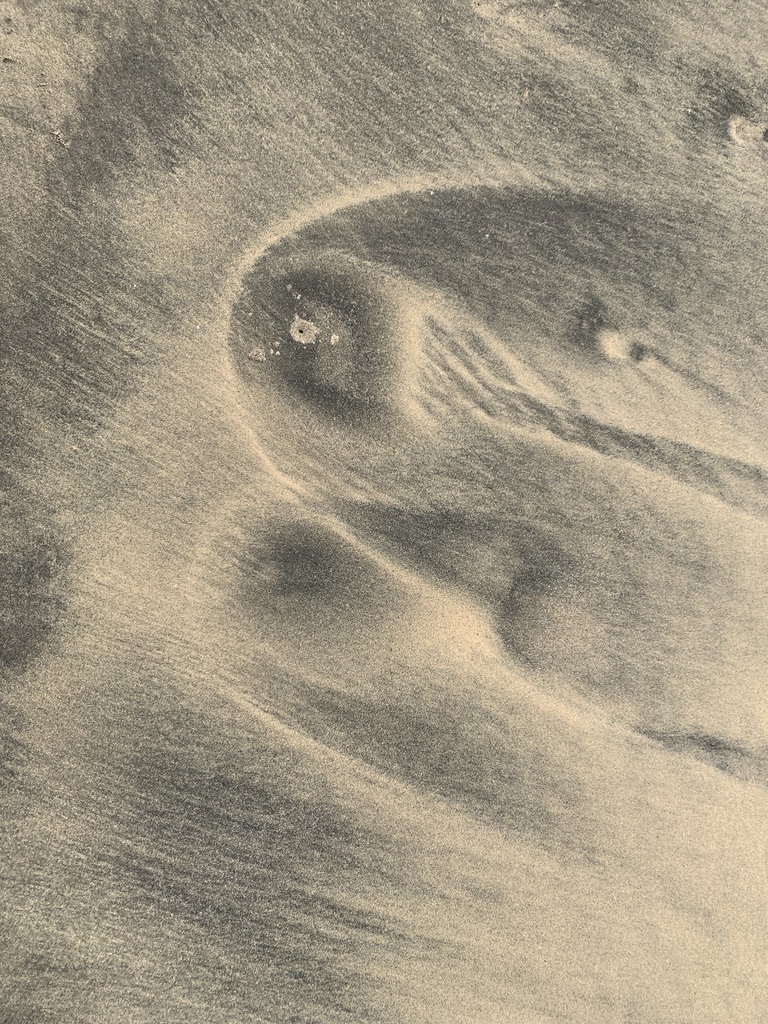
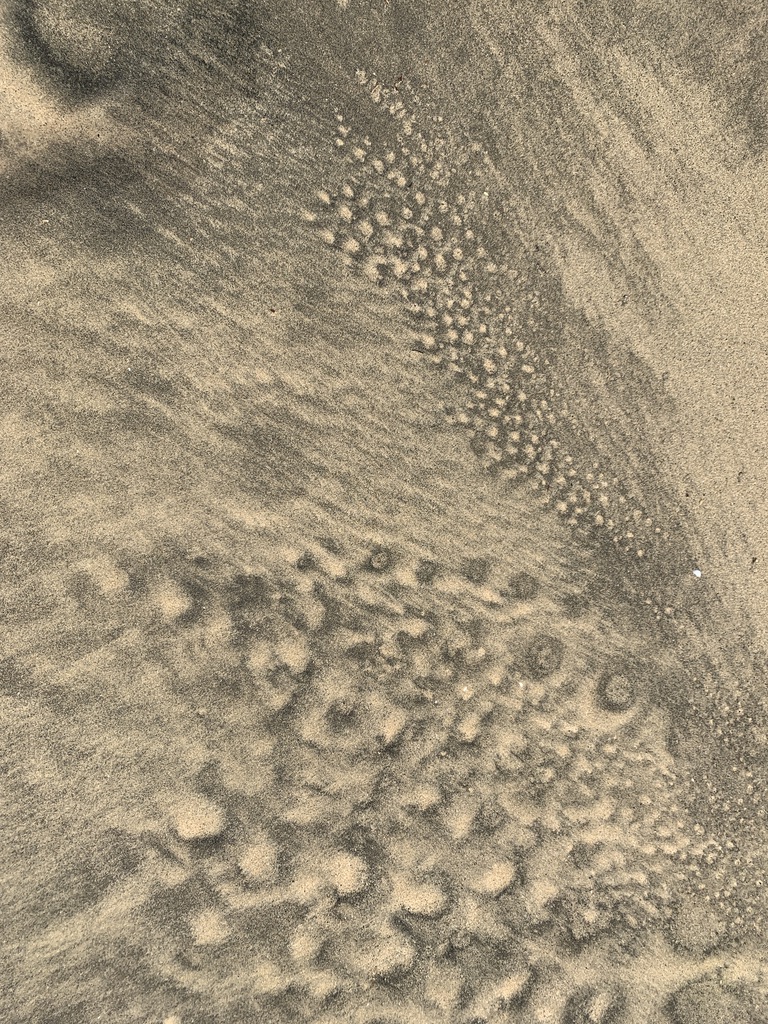
I’ve put sunscreen on this morning and do it a second time, but after about half-way, I have to subdue. Walking south I’m facing the sun and I literally feel how it’s burning my face. I’ve wrapped my cotton shawl (always take a cotton shawl with you and wrap it around your head like the African women do.) I know that it serves much better as heat protection than a hat, as it’s thick and there’s kind of a micro-climate evolving under the thick fabric. That’s what it is all about wearing a turban. But the heat in my face gets unbearable. So I take of my blouse and wrap it around my face – I now truly look like a Tuareg! But the trick works.
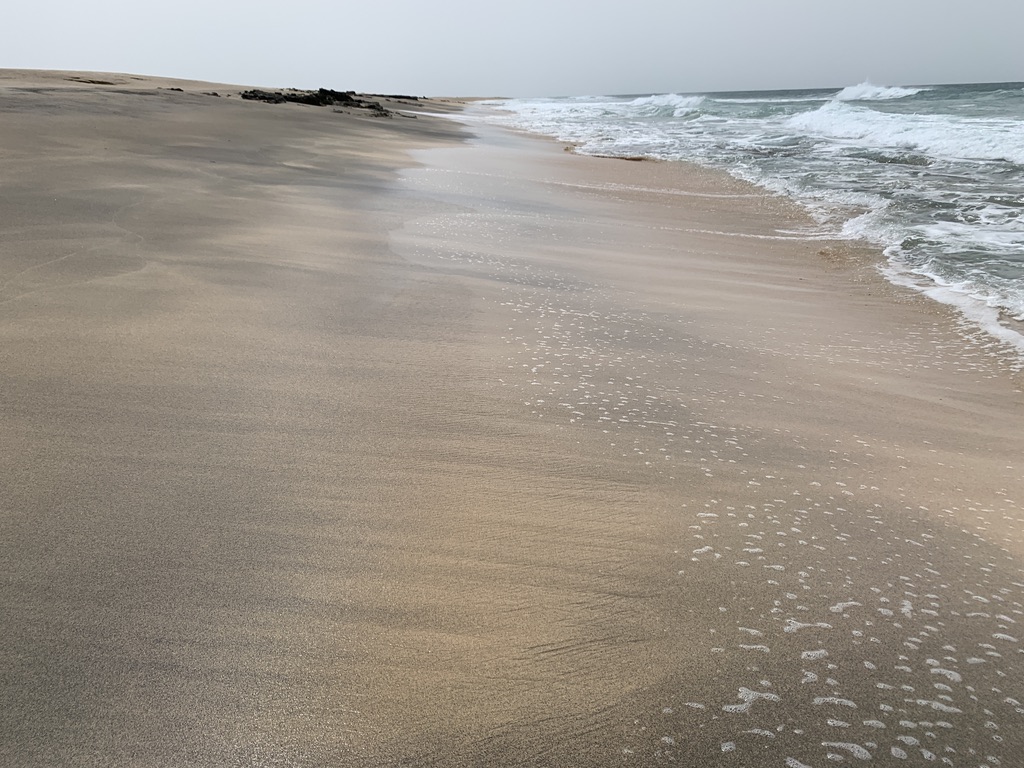


Later in the afternoon clouds cover the blazing sun, the wind gets stronger. It takes me a bit more than three hours to walk back to Vilo do Maio. At Kaza Tropical I gulp down a Guava drink and cool my heated body in the sea.
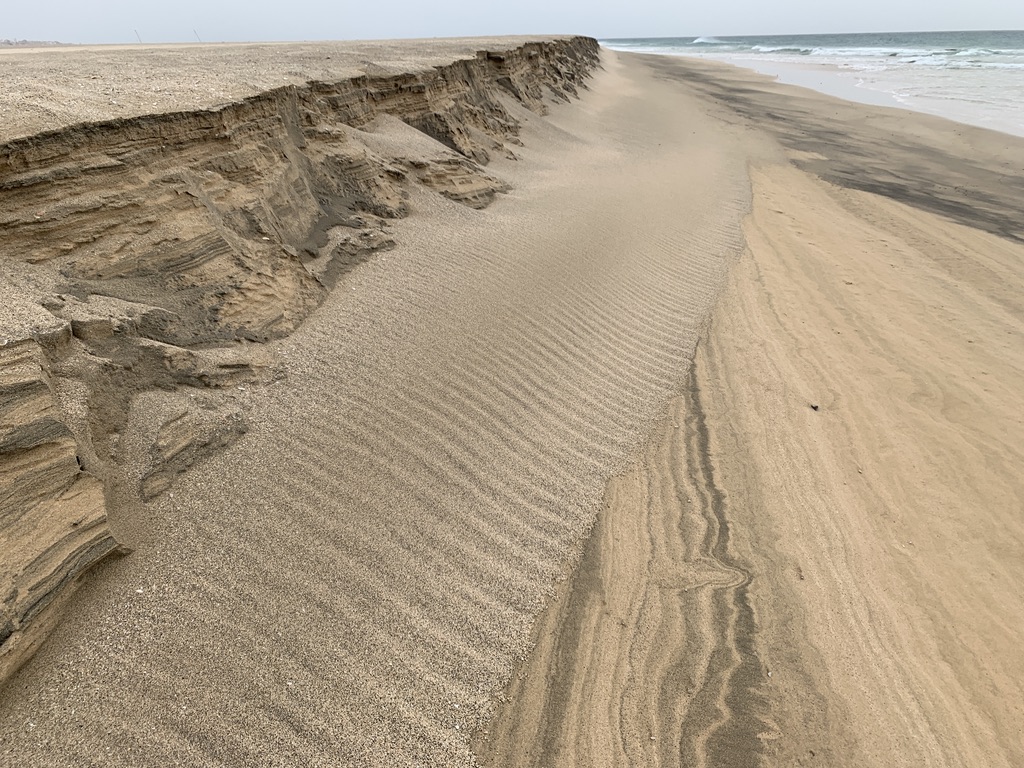

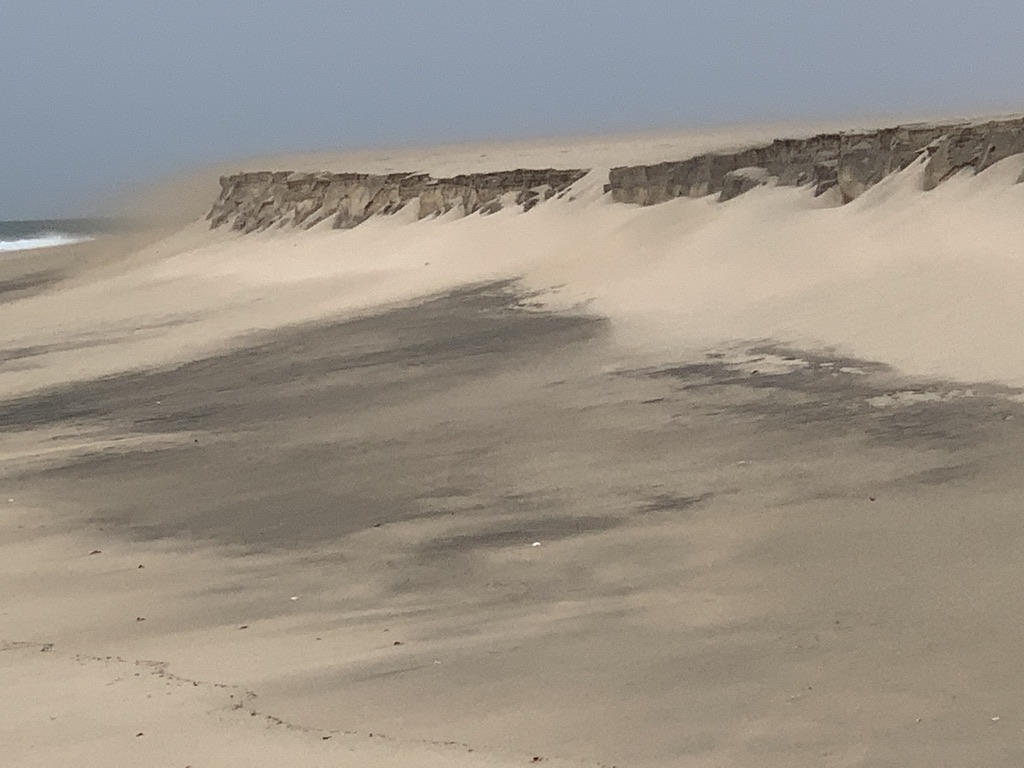
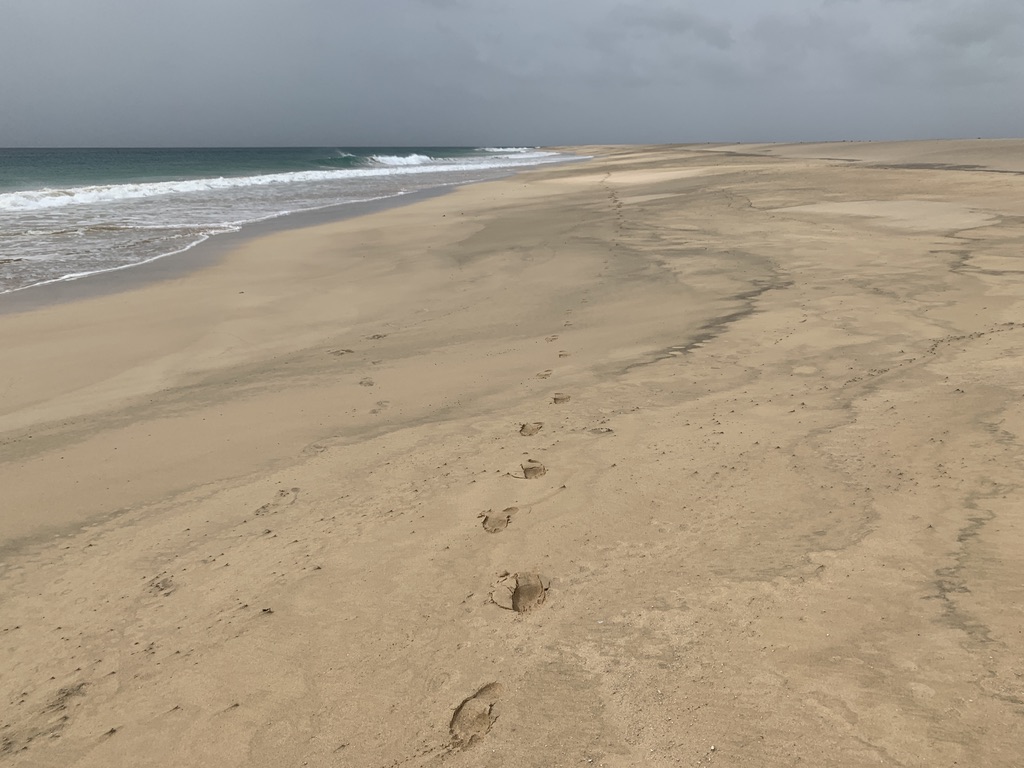
There’s already an older and a younger man swimming. The older encourages me in English to get in, it would only be cold the first moment. I detect a Swiss accent and speak back in Swiss German. Surprised he answers with a clearly distinguishable Basel accent.
He introduces himself as Martin. And he and his wife Caroline, a lady from New Zealand, have run the Kaza Tropical now for eleven years. They literally stranded here on a sailing trip and the yellow sailing boat anchoring in the bay is theirs. What a surprise!
I go quickly back to my hotel to have a shower before I have dinner at Kaza Tropical. Martin and Caroline, “nice to meet you”, invite me to their table and talking to them I find a couple at my age who’ve lived a rather exotic life so far. Their two boys grew up here, but they also lived some time in France. Martin has worked as a social worker on ships for ex-junkies and other mentally fragile people – and there he also met someone I know from Zug – Erwin, also a social worker. My friend Brigit travelled with his partner and daughter to Africa, to my, our village in Sénégal even a few times. Johanna and her daughter loved it as much as Brigit and her daughter and I do. The world is small – what coincidence!
